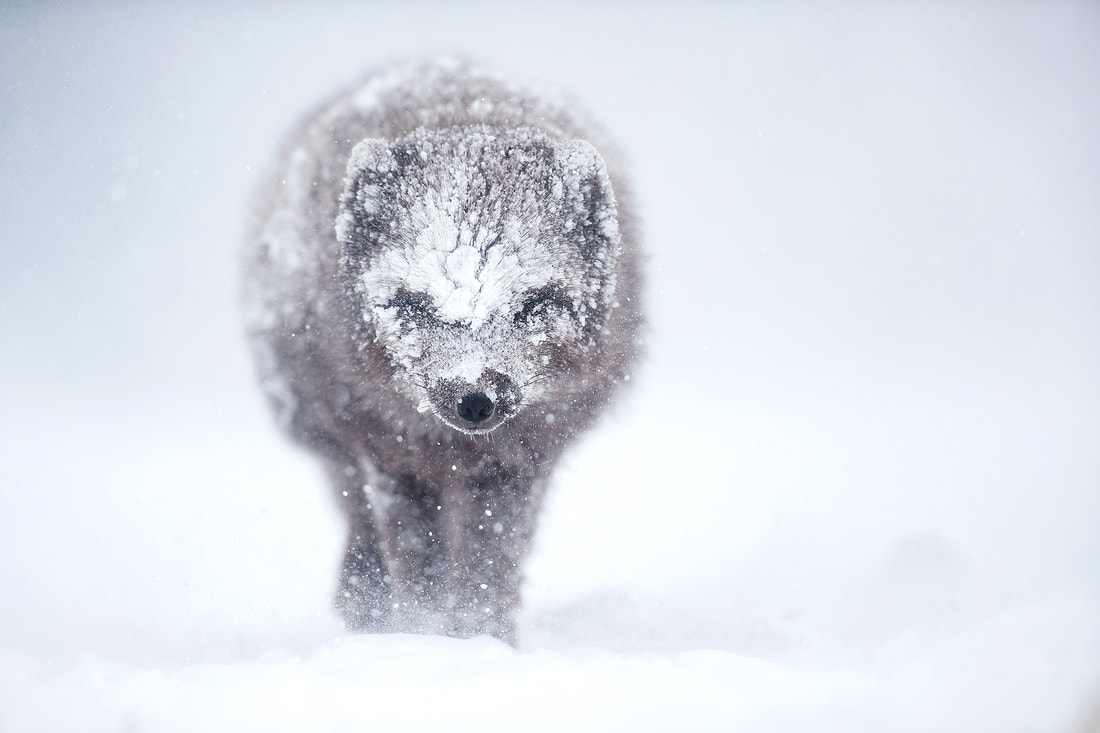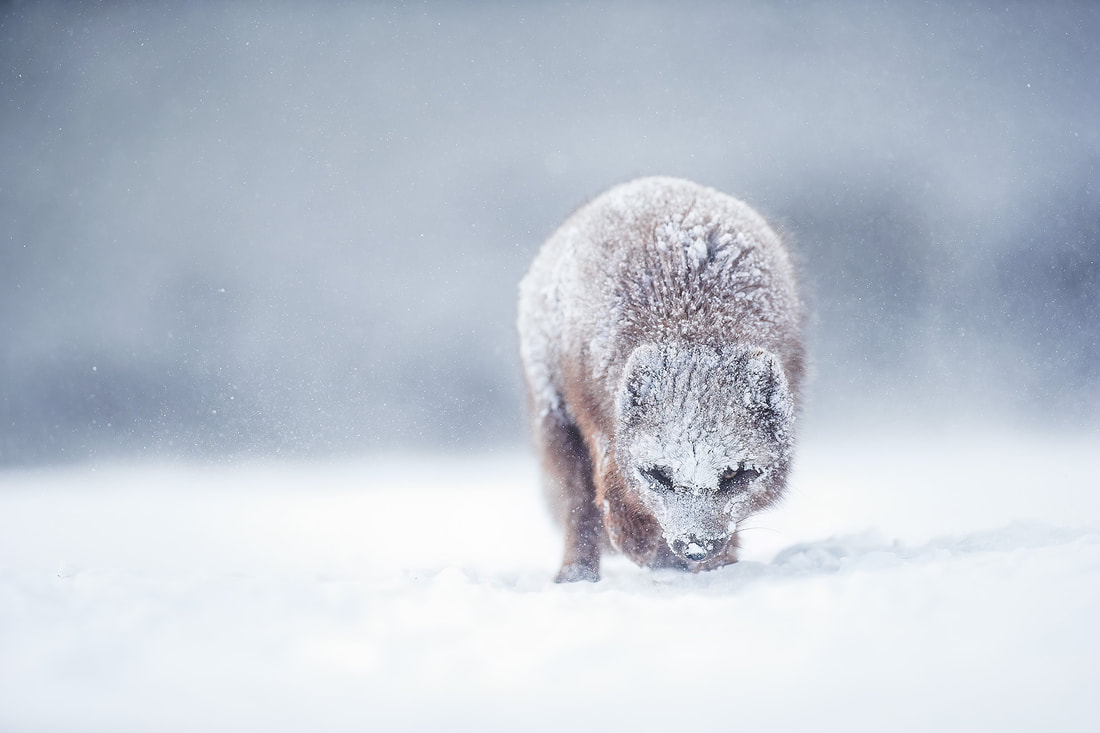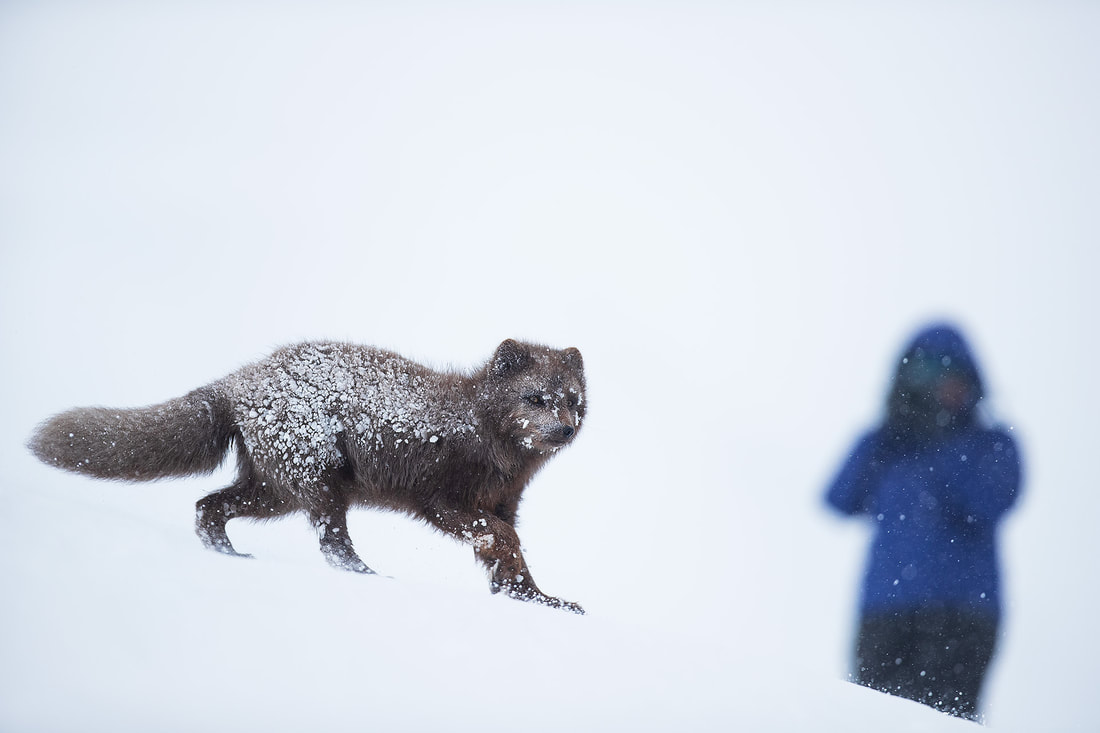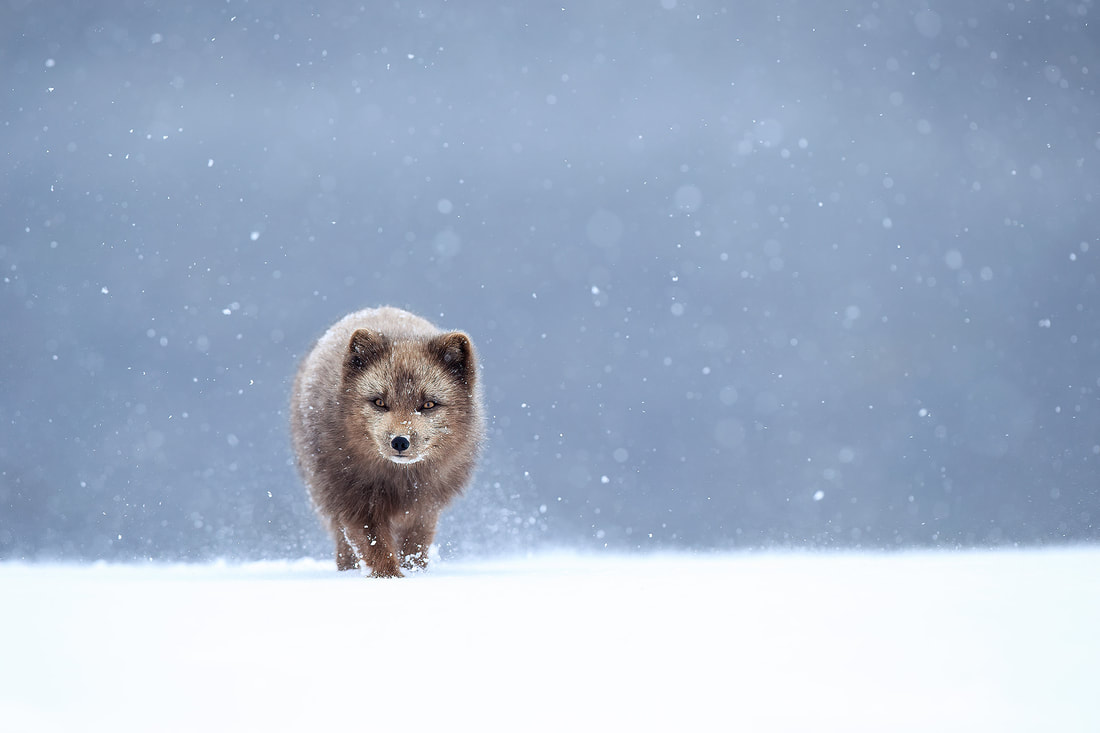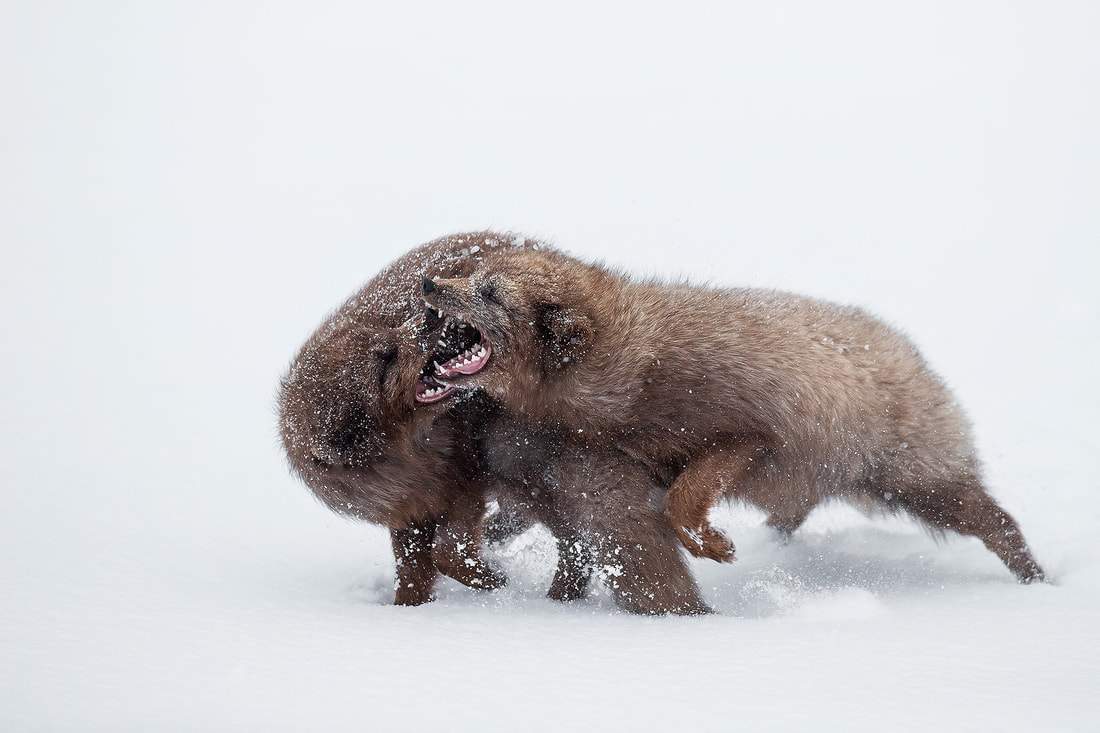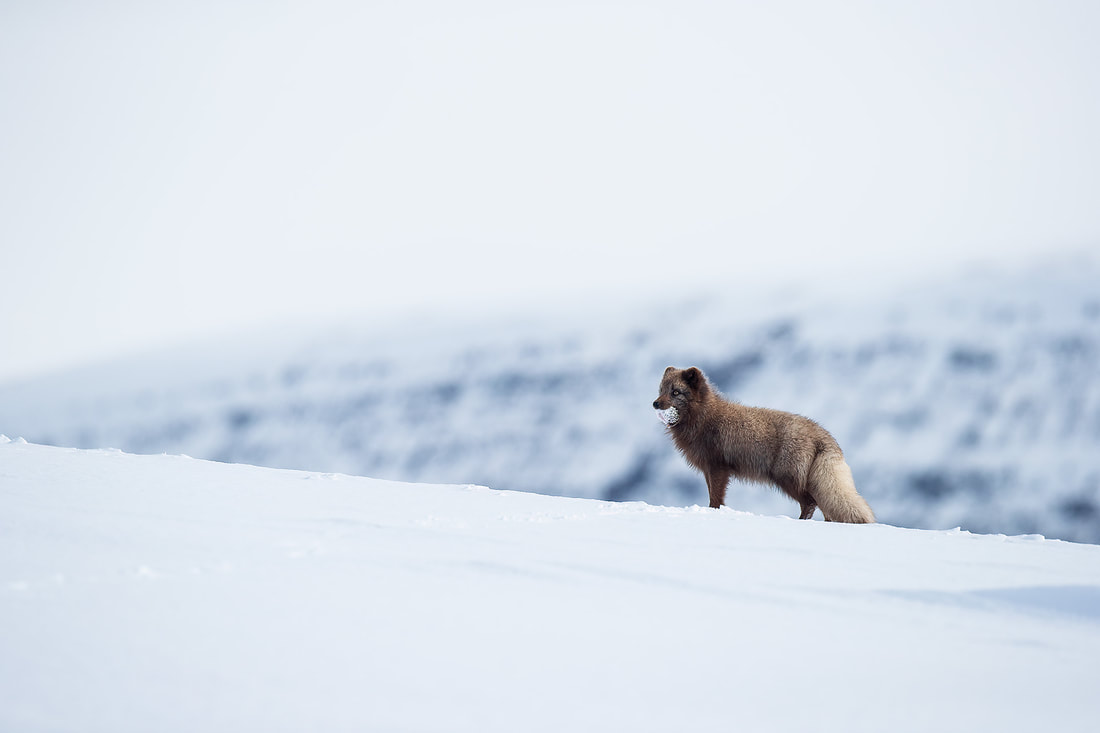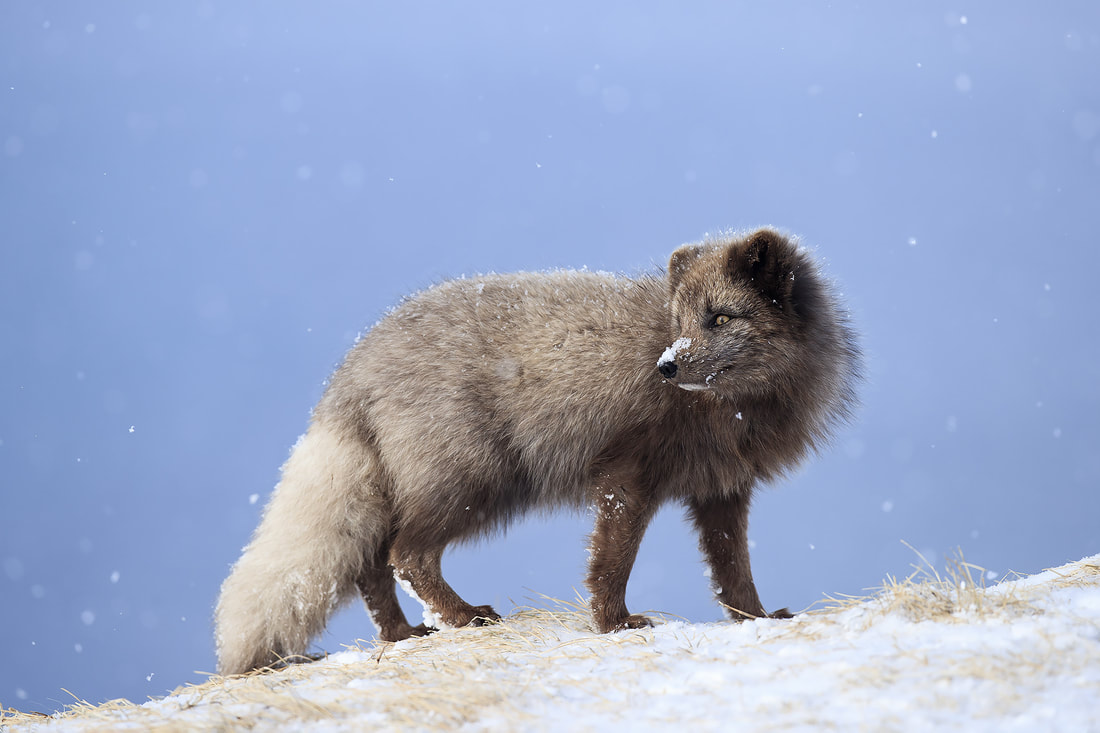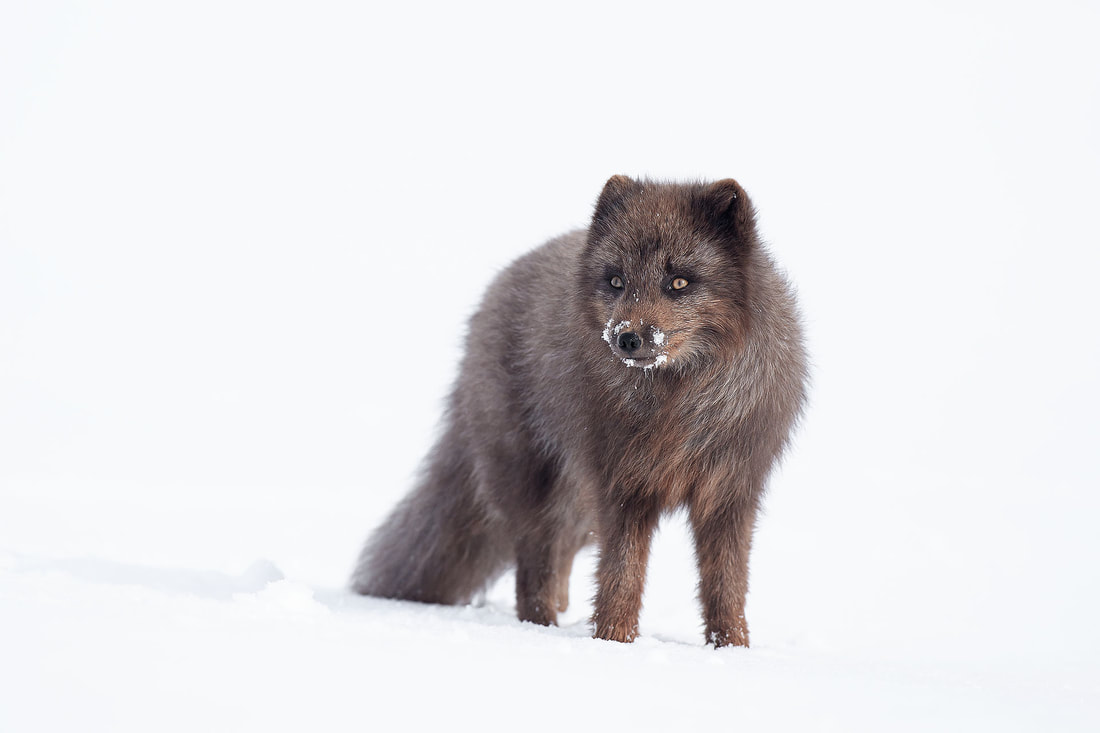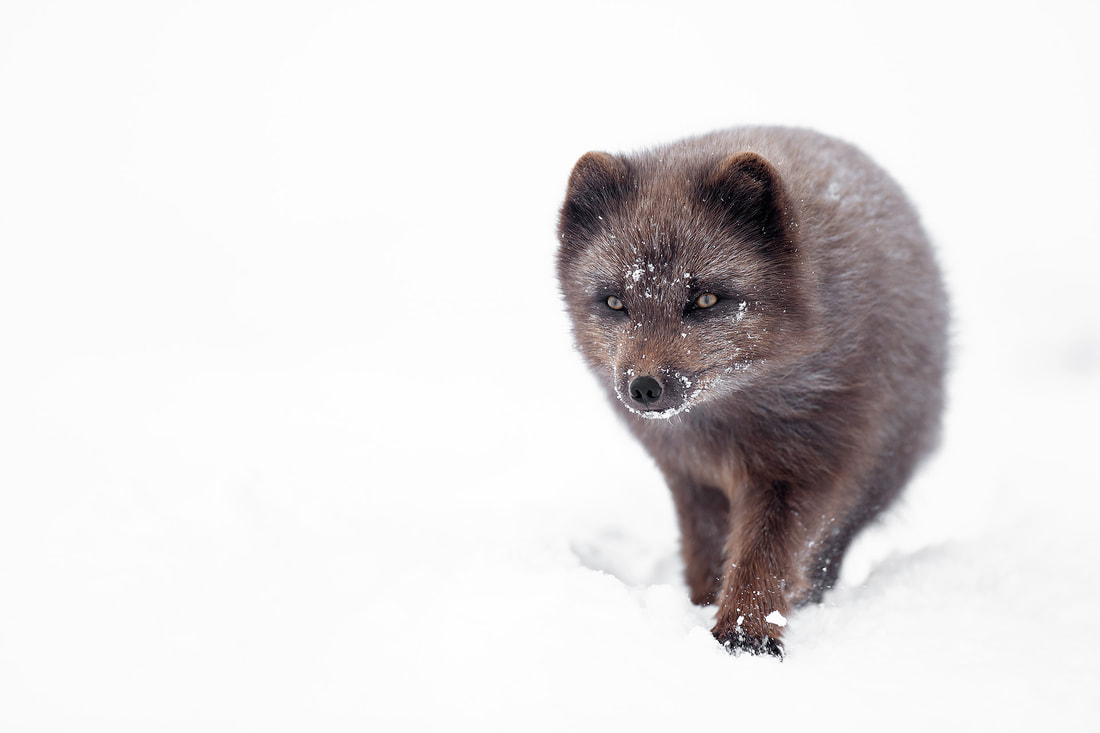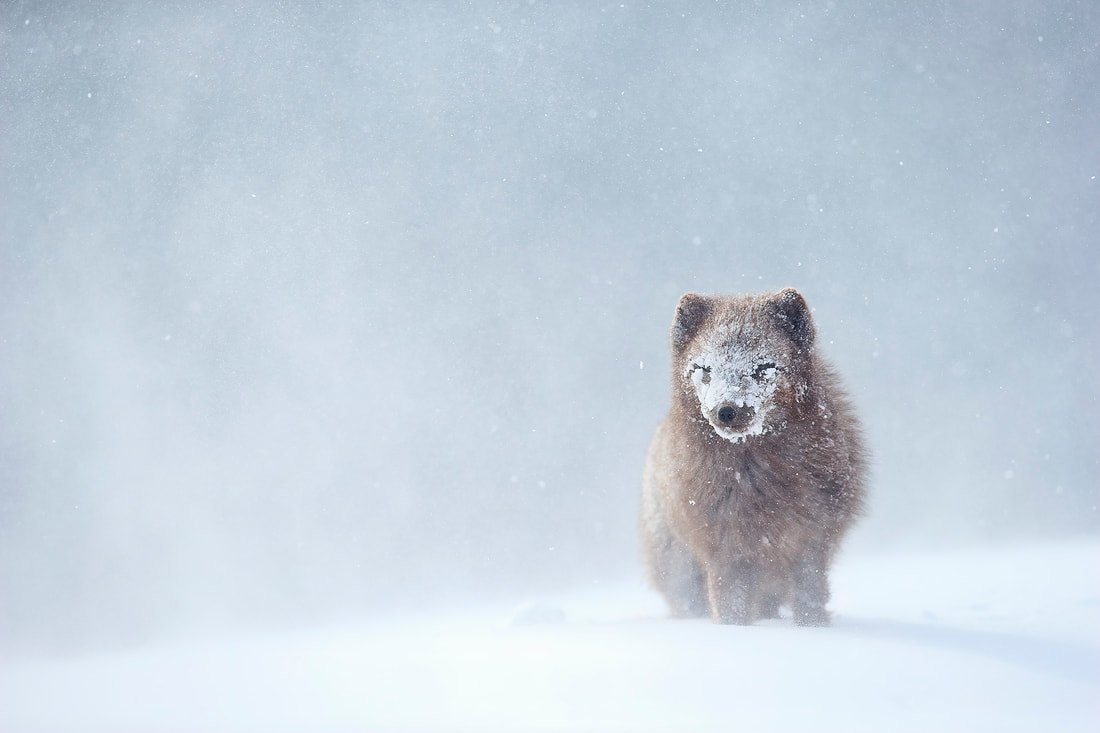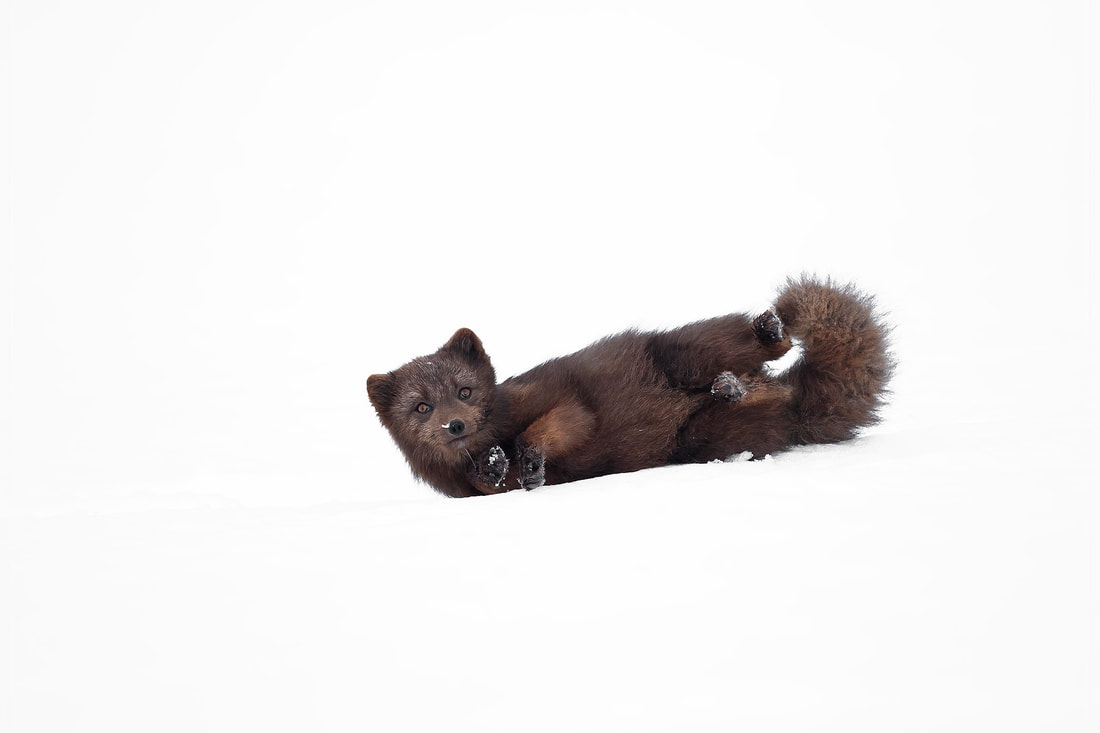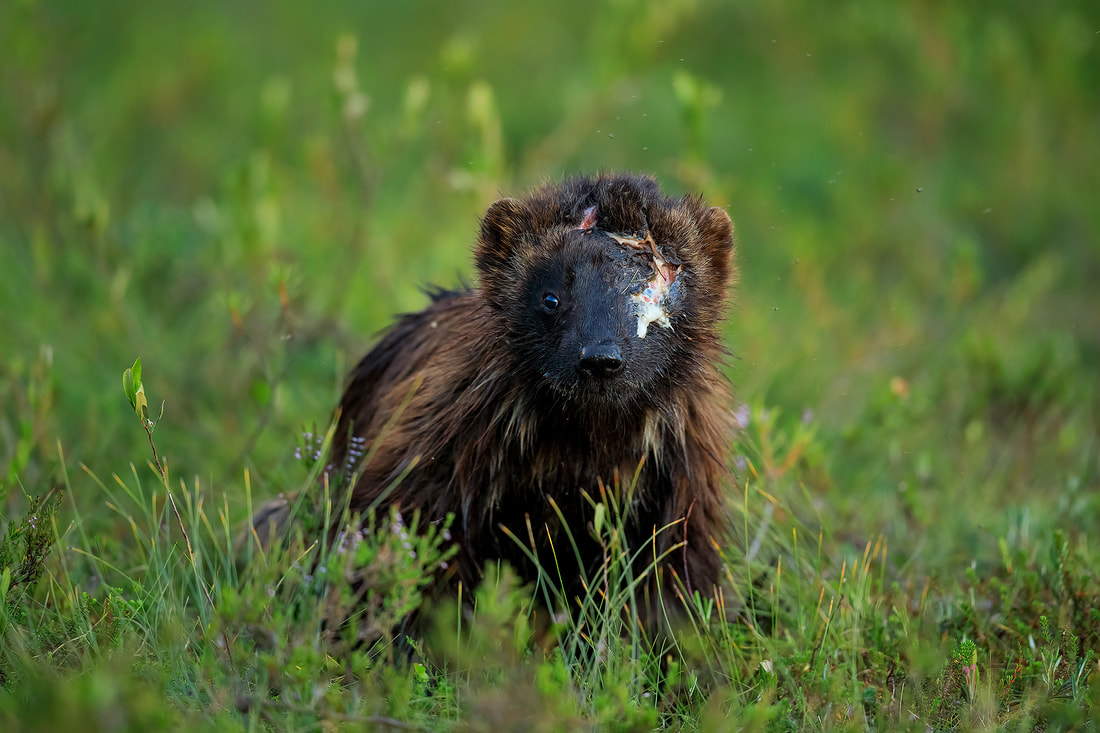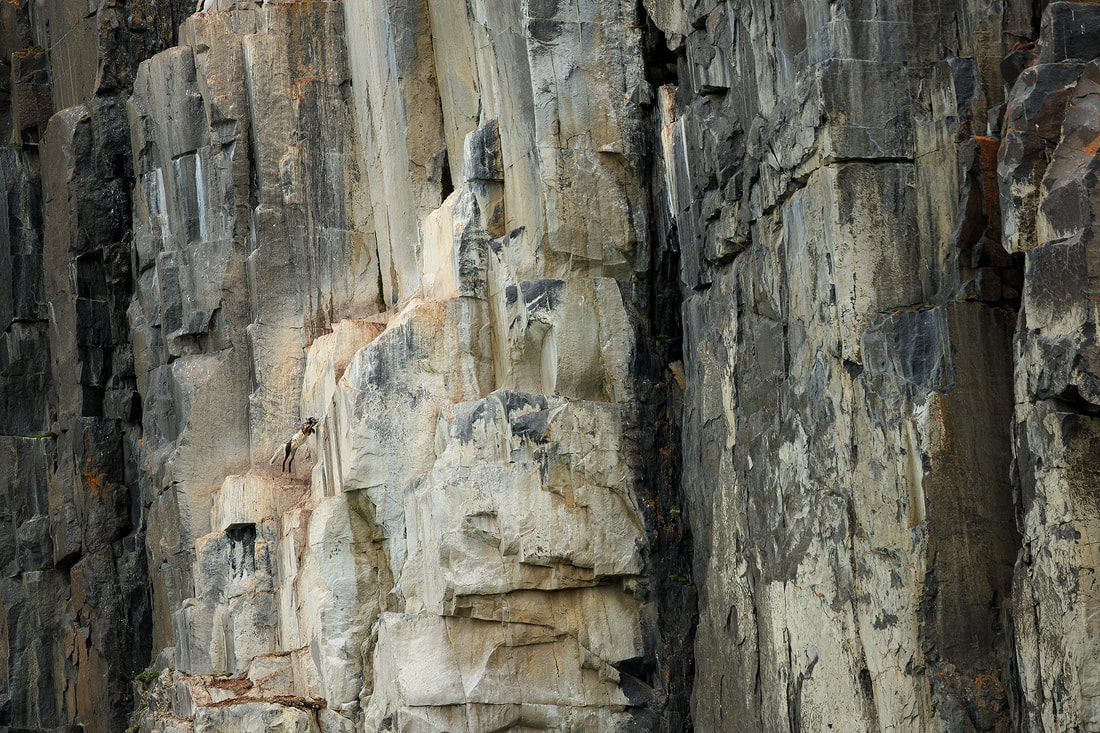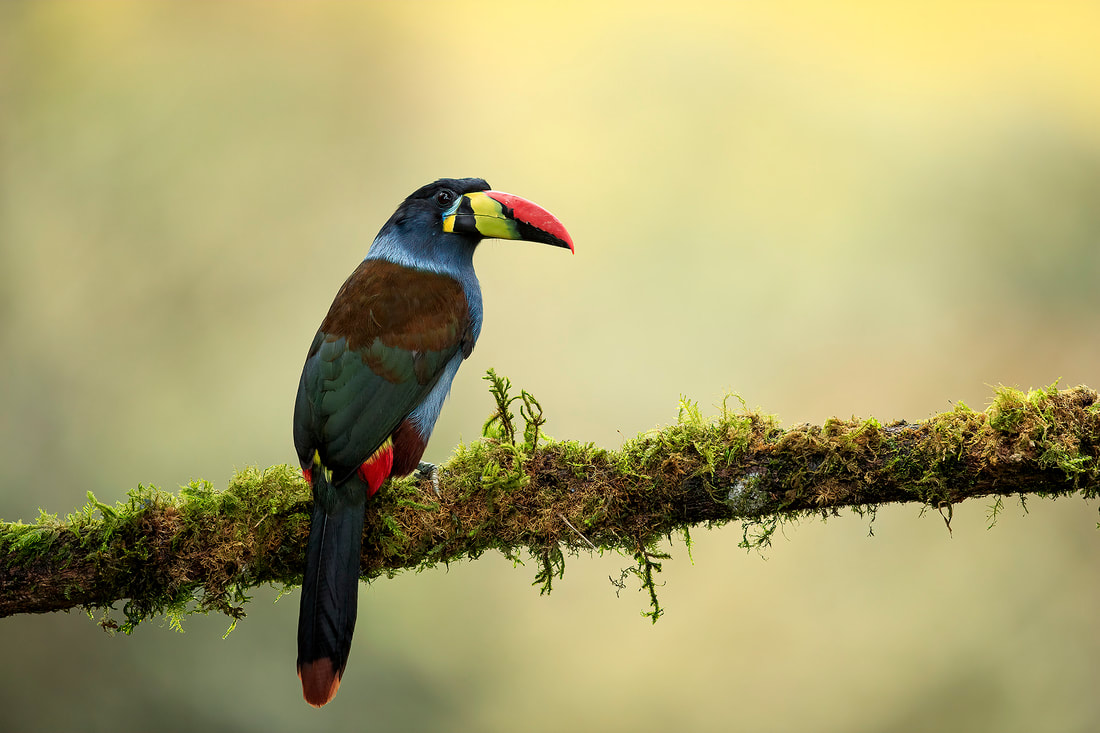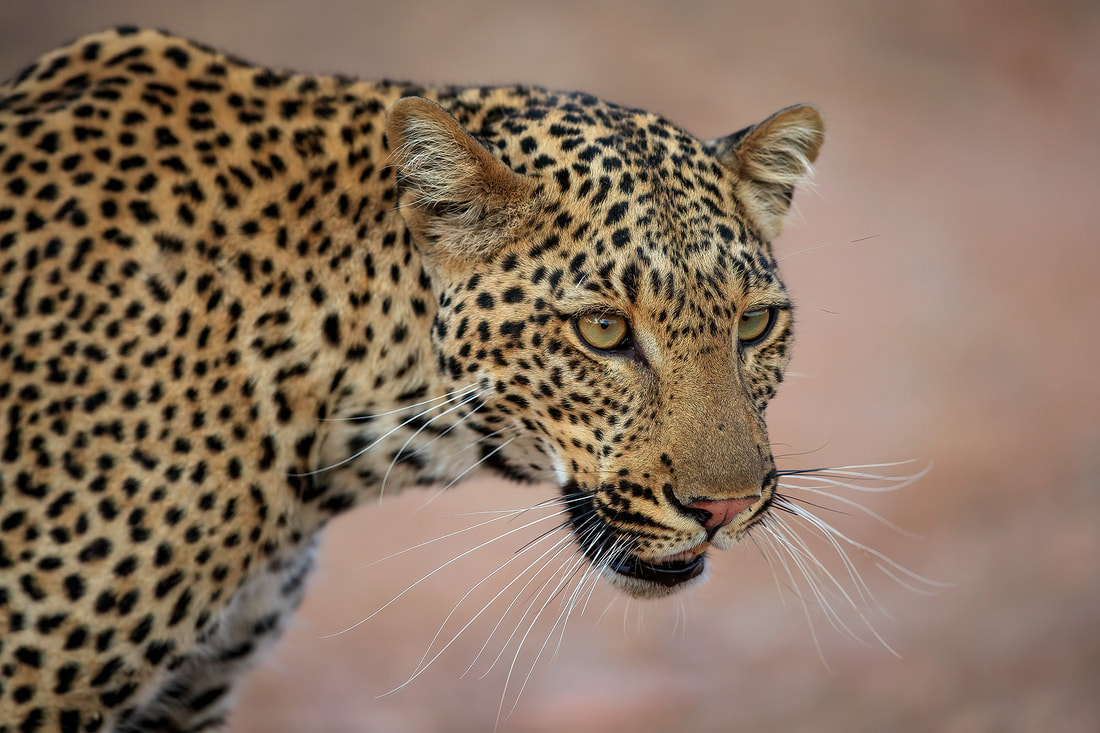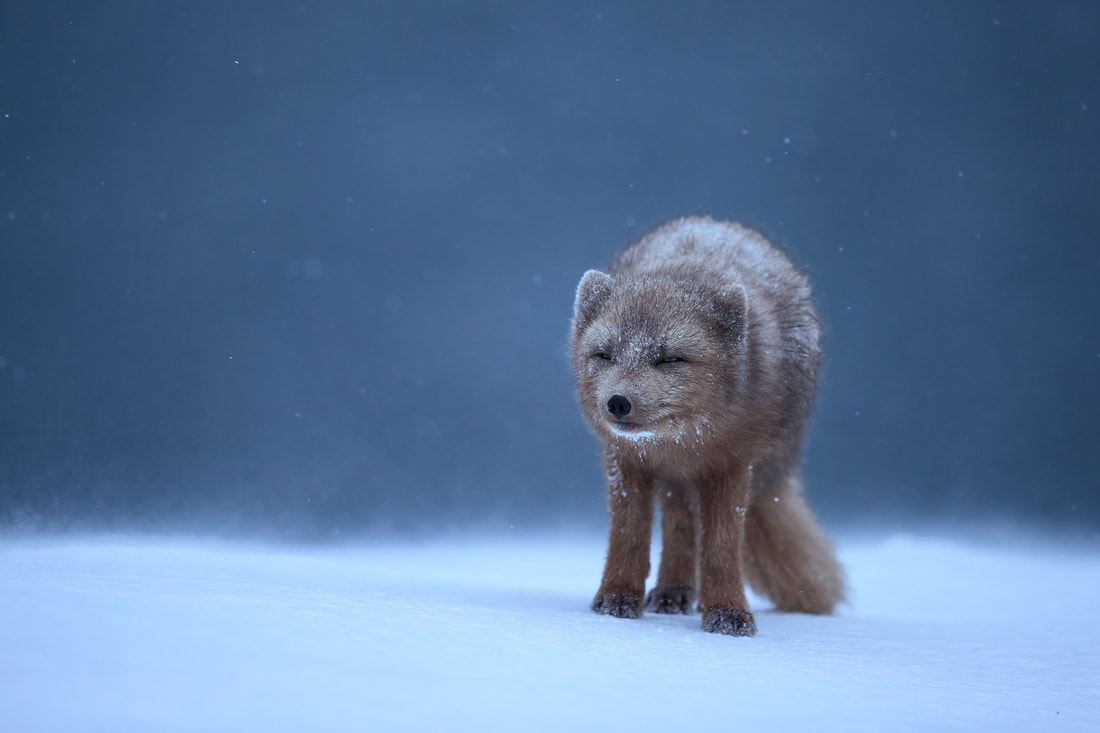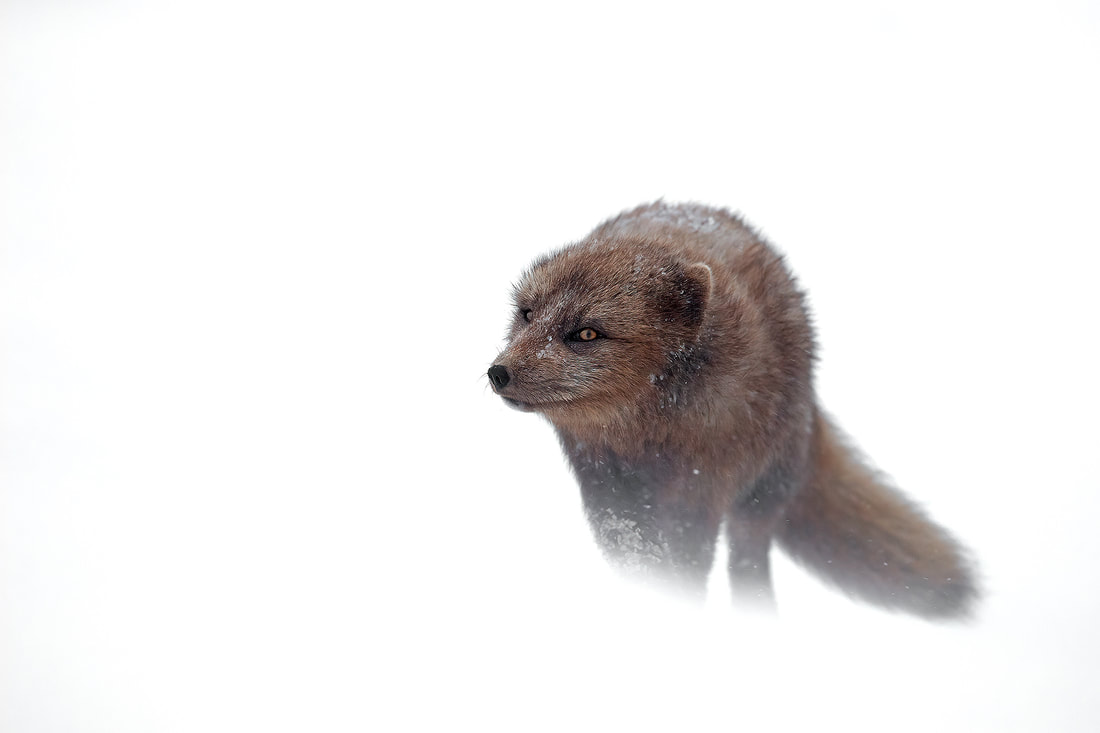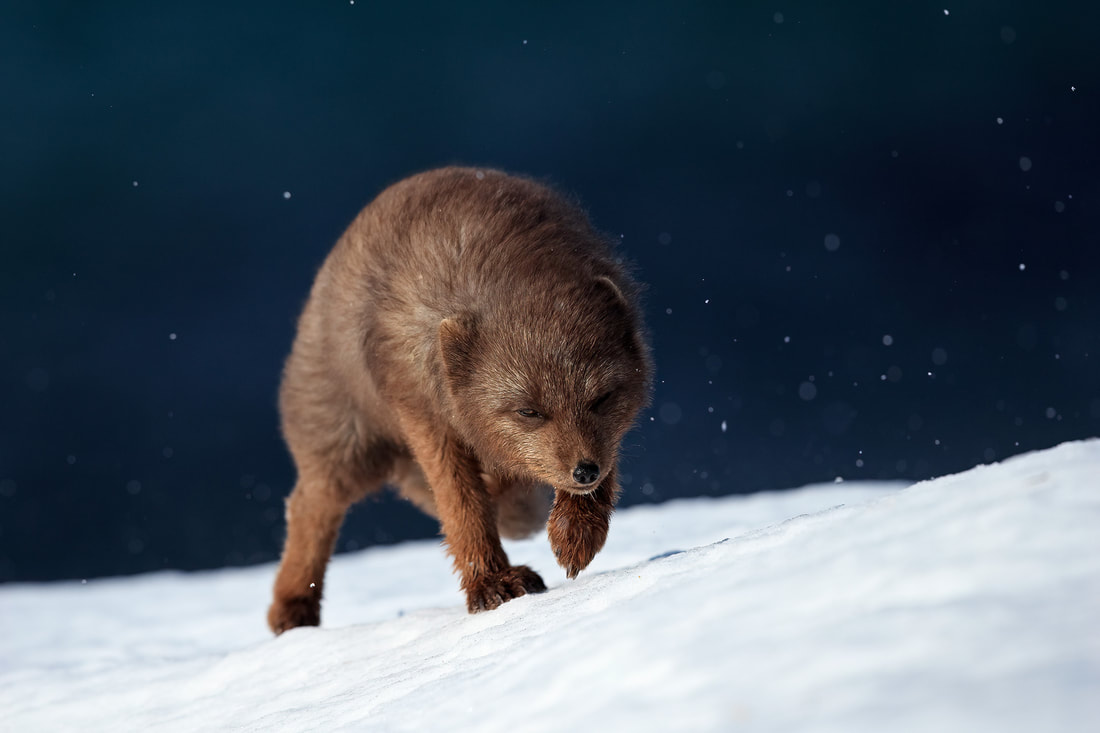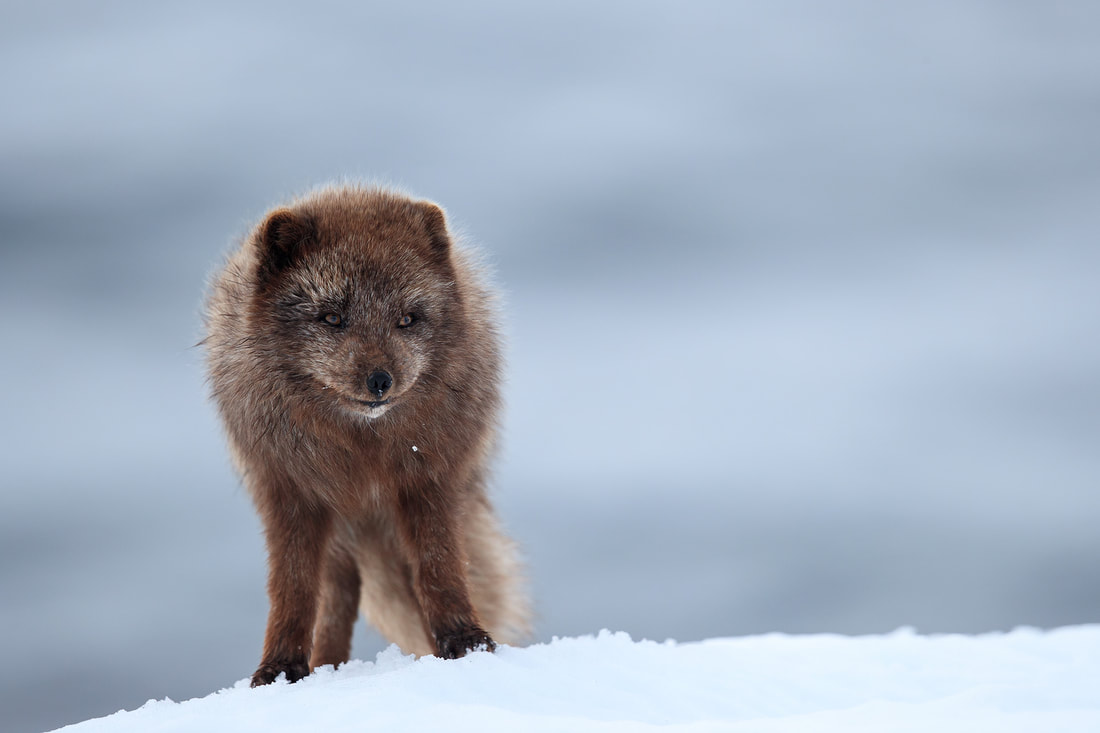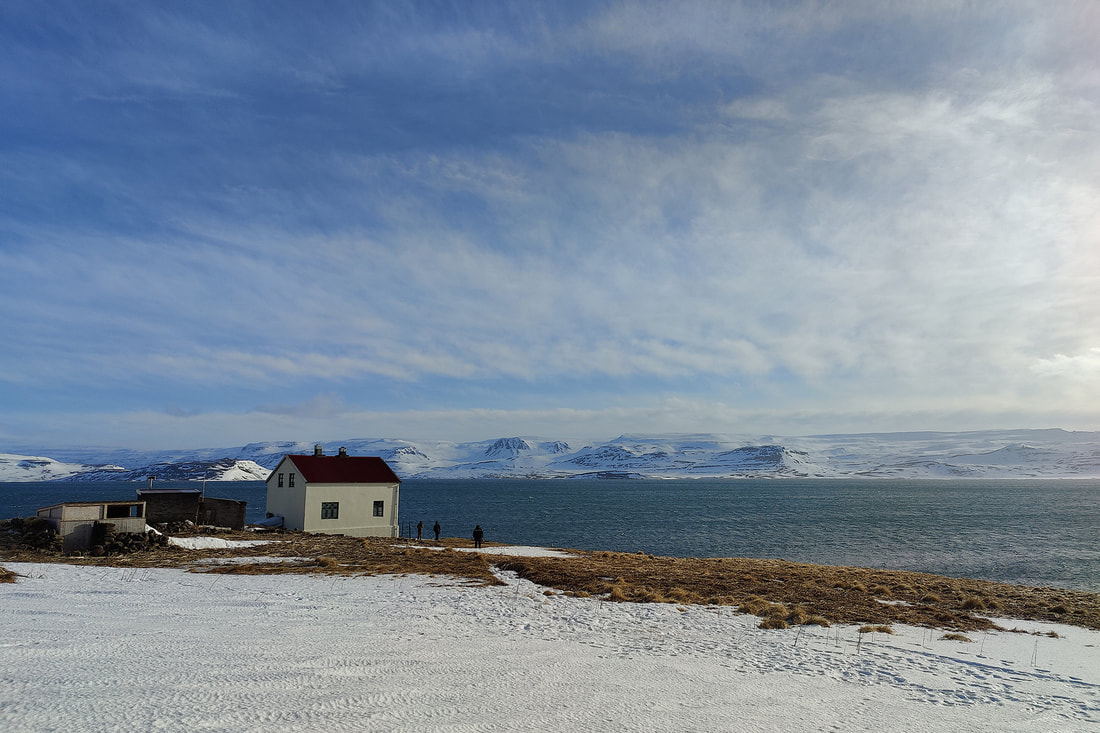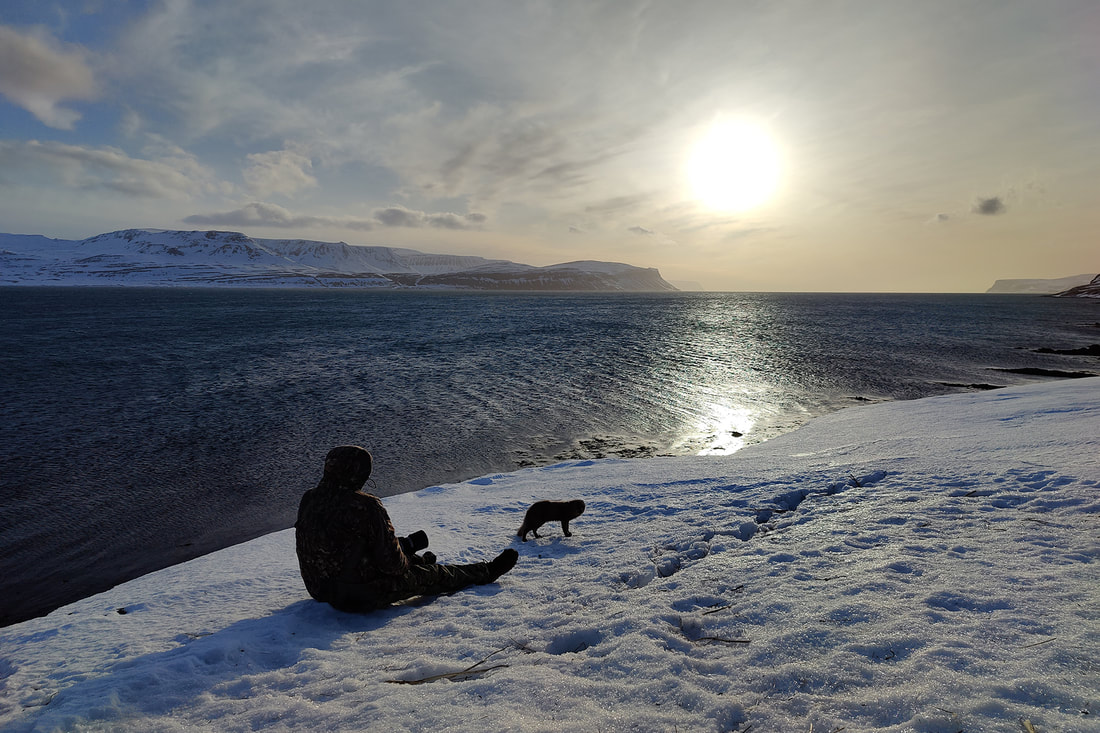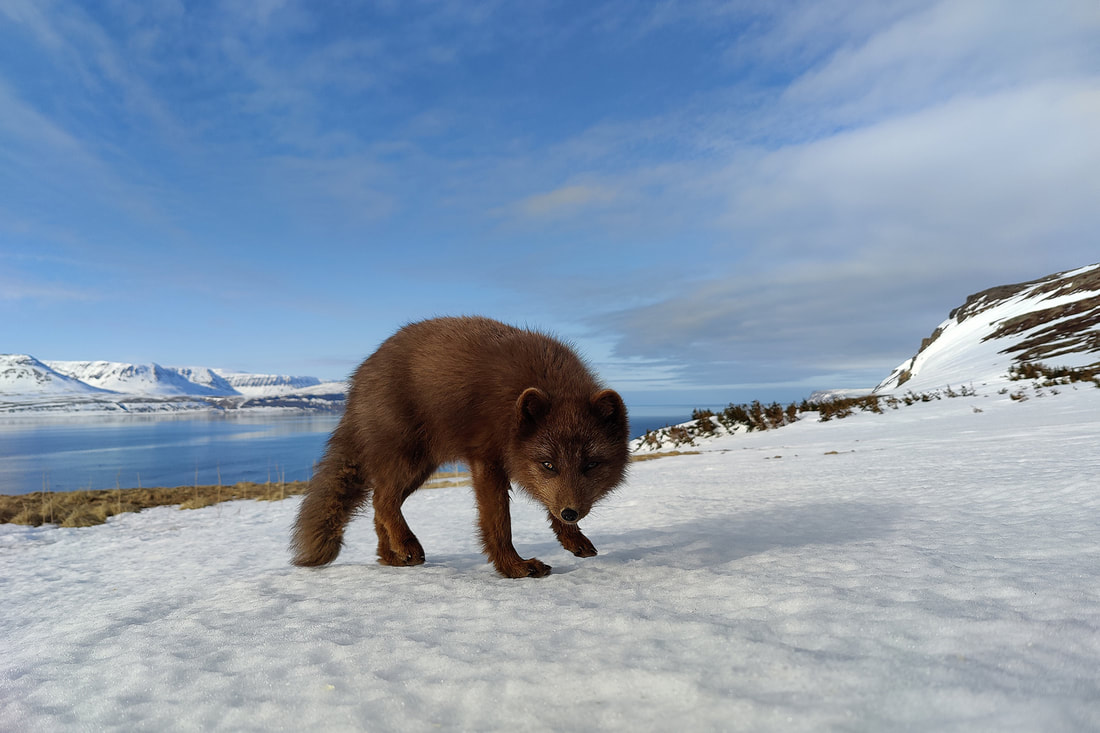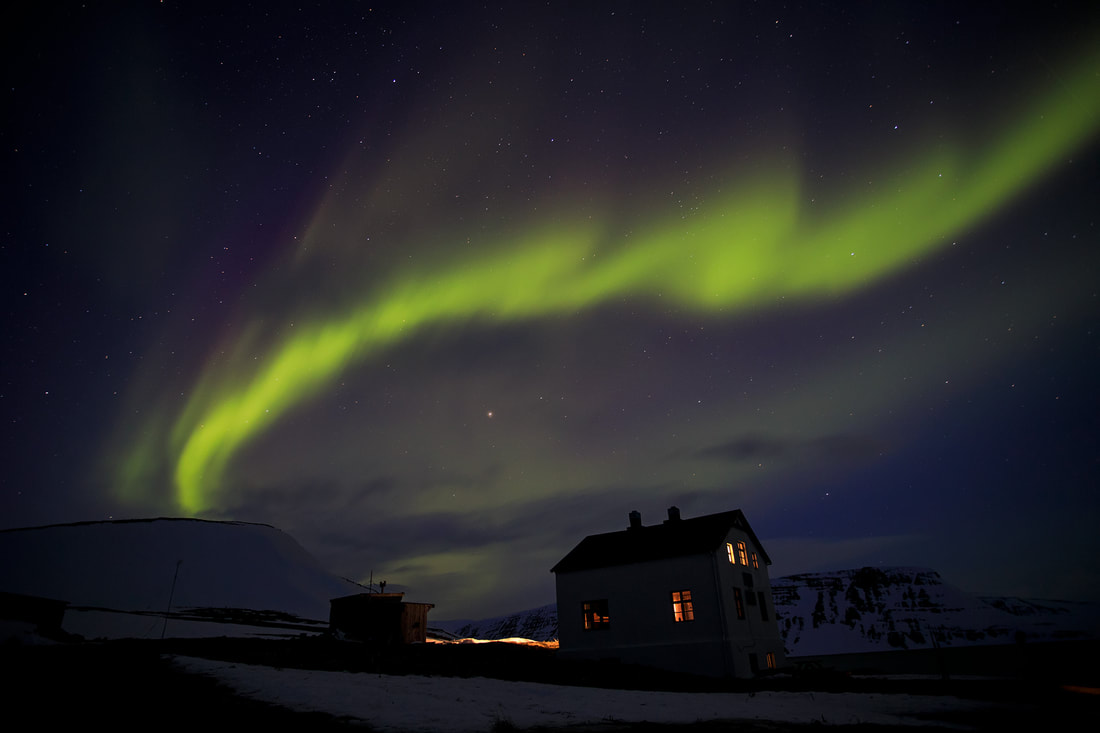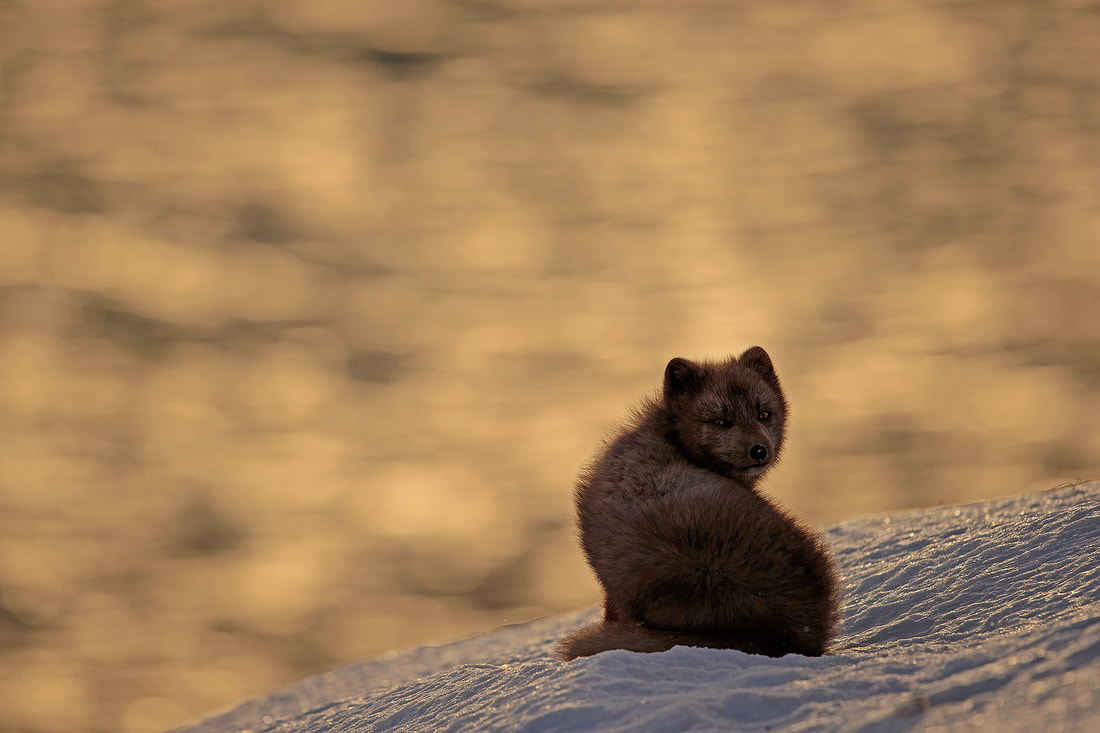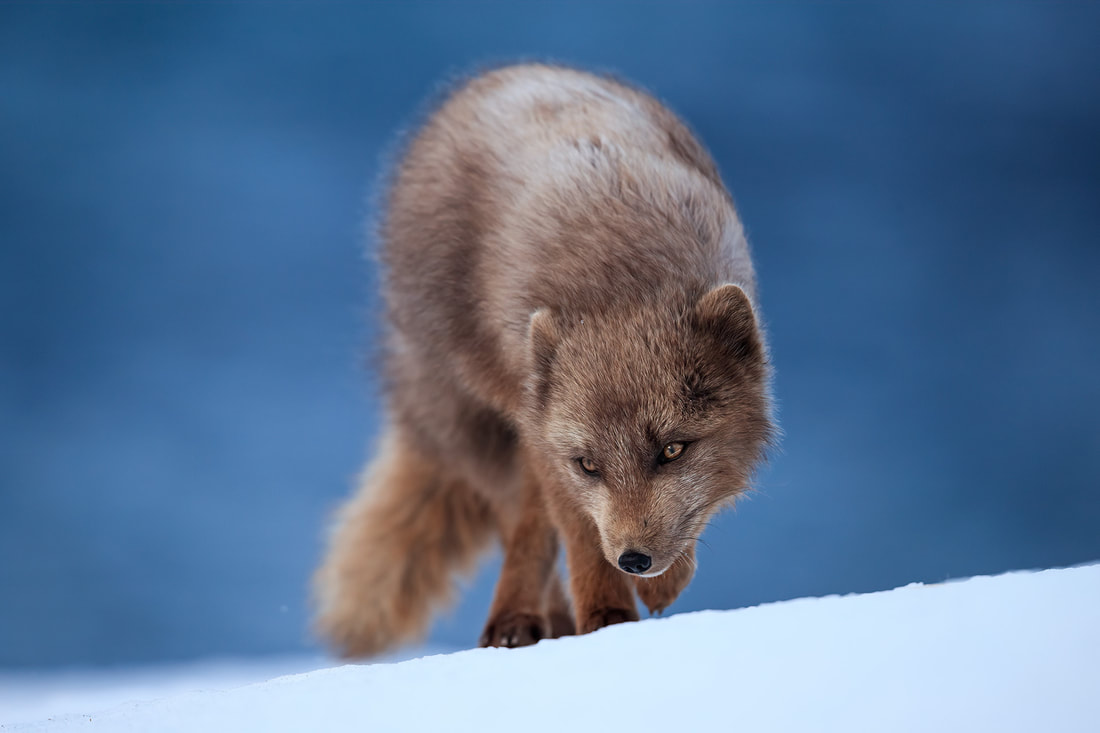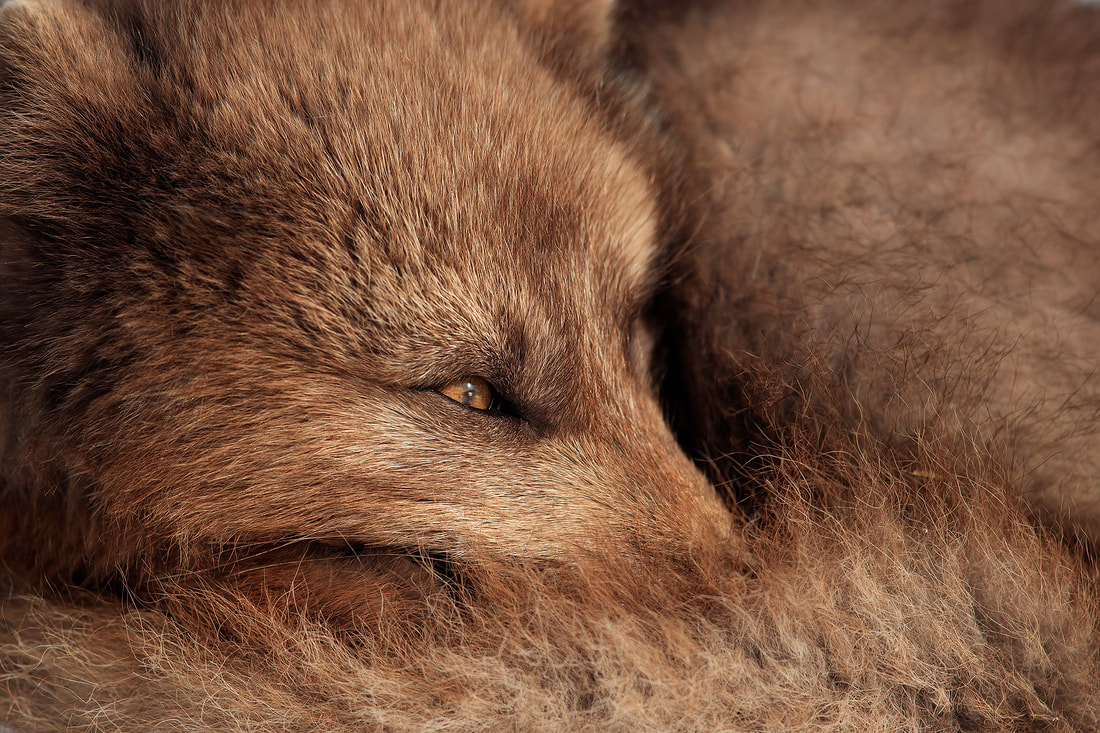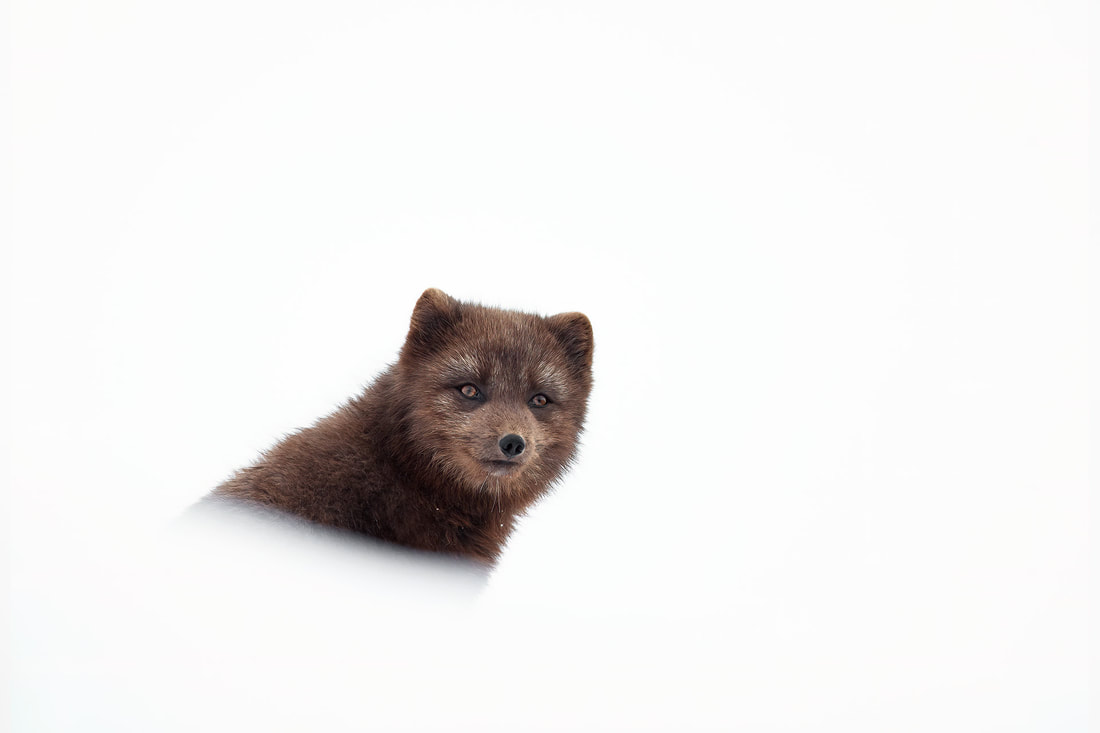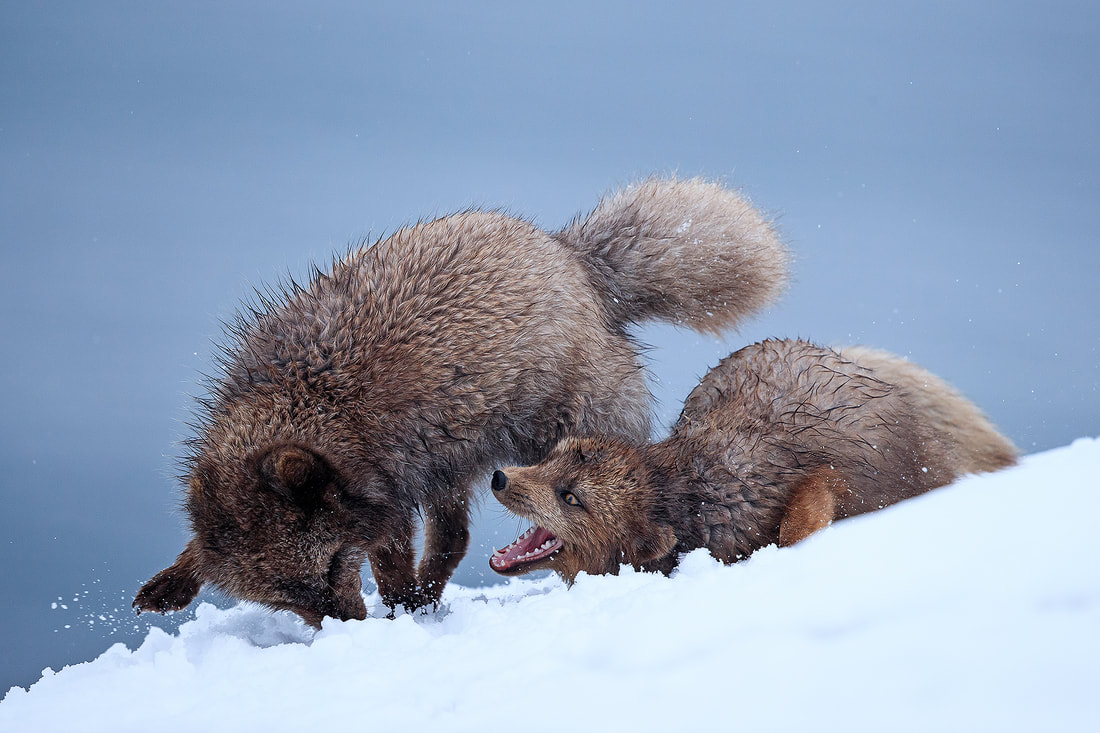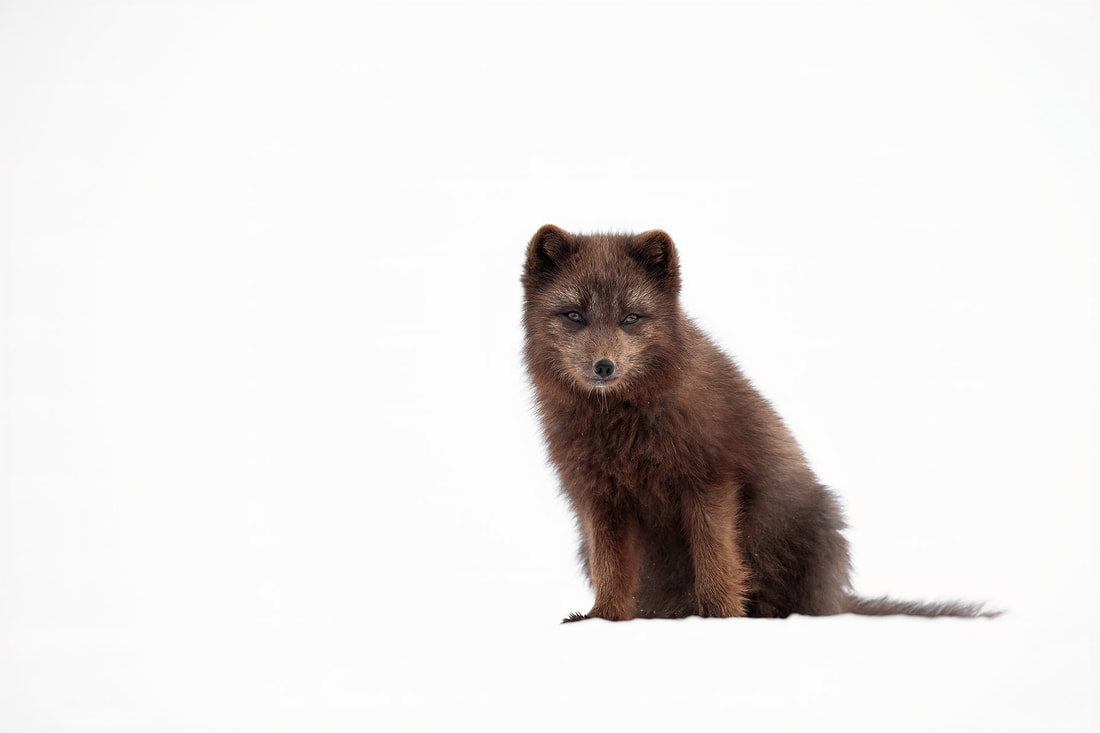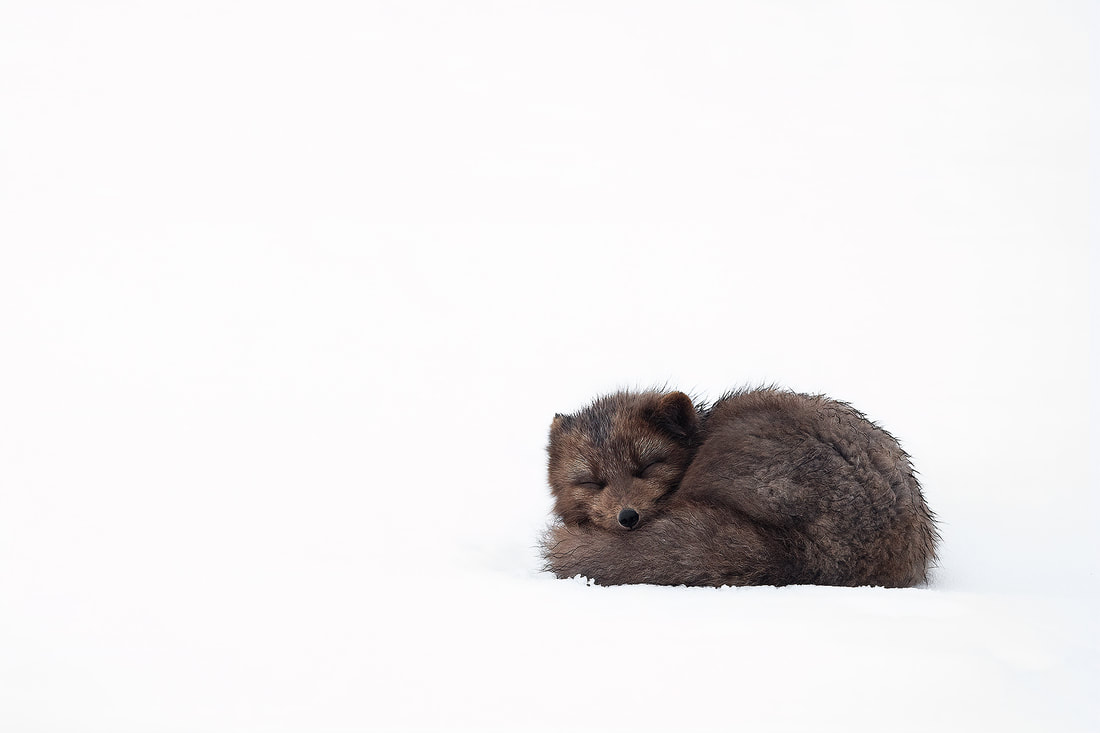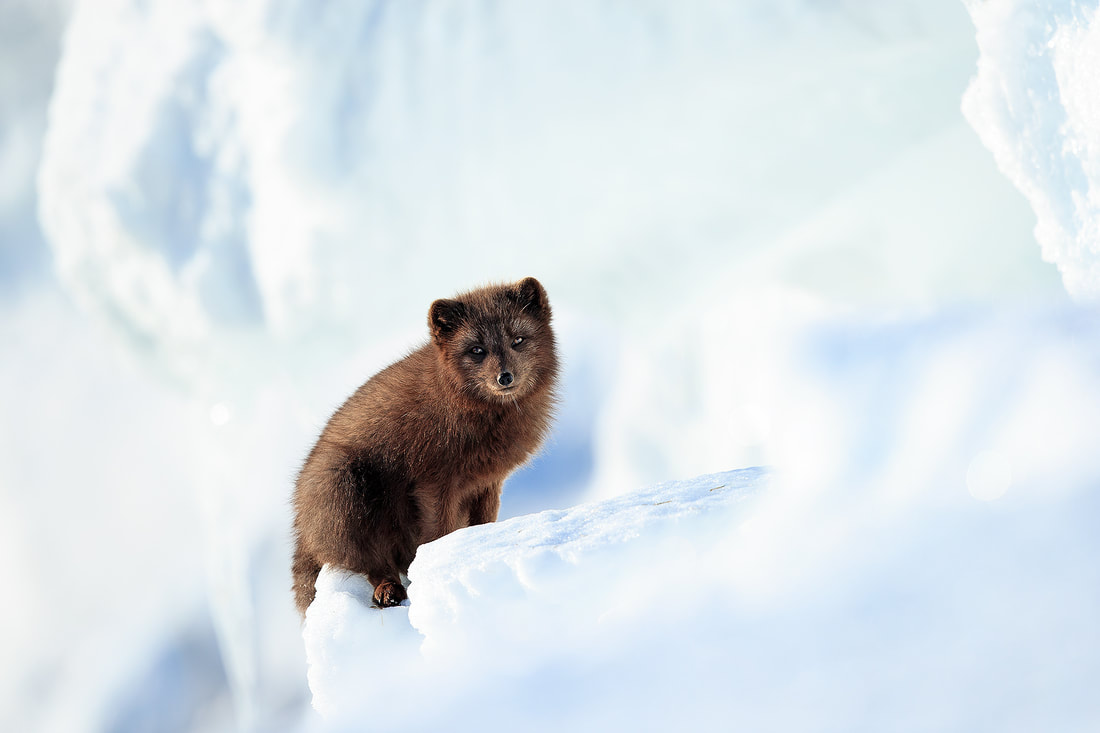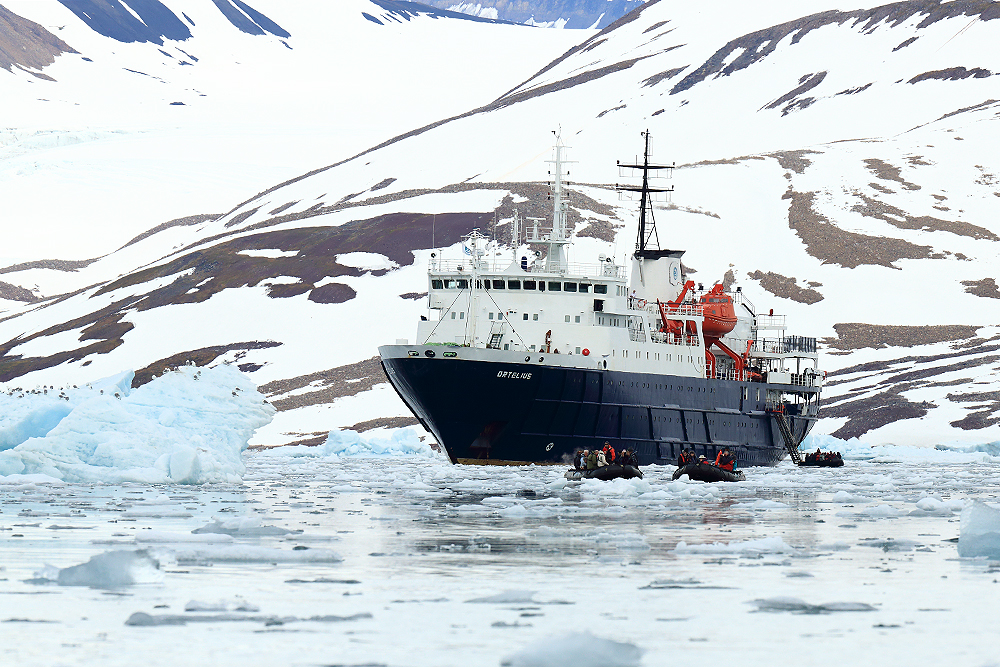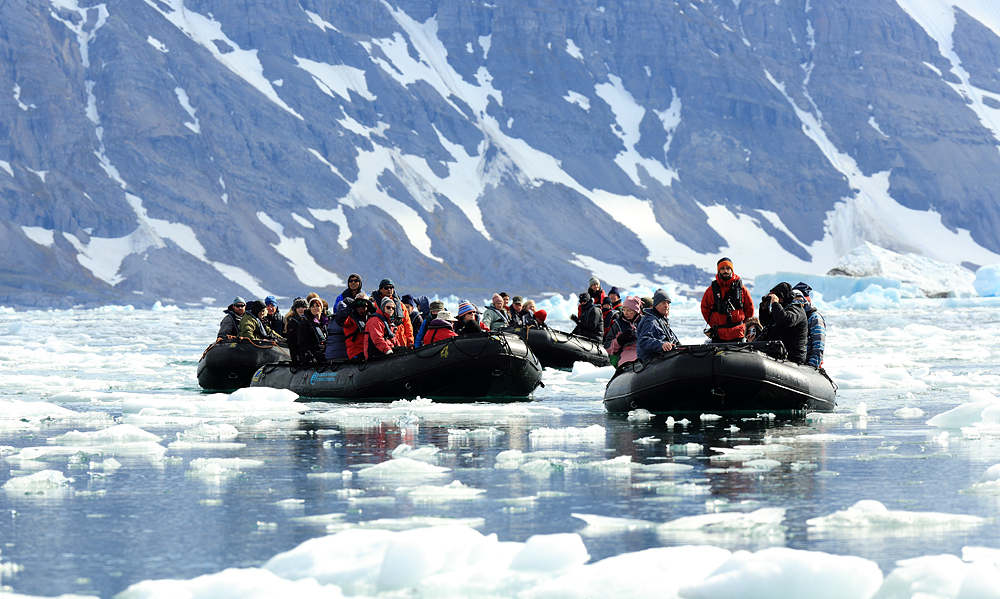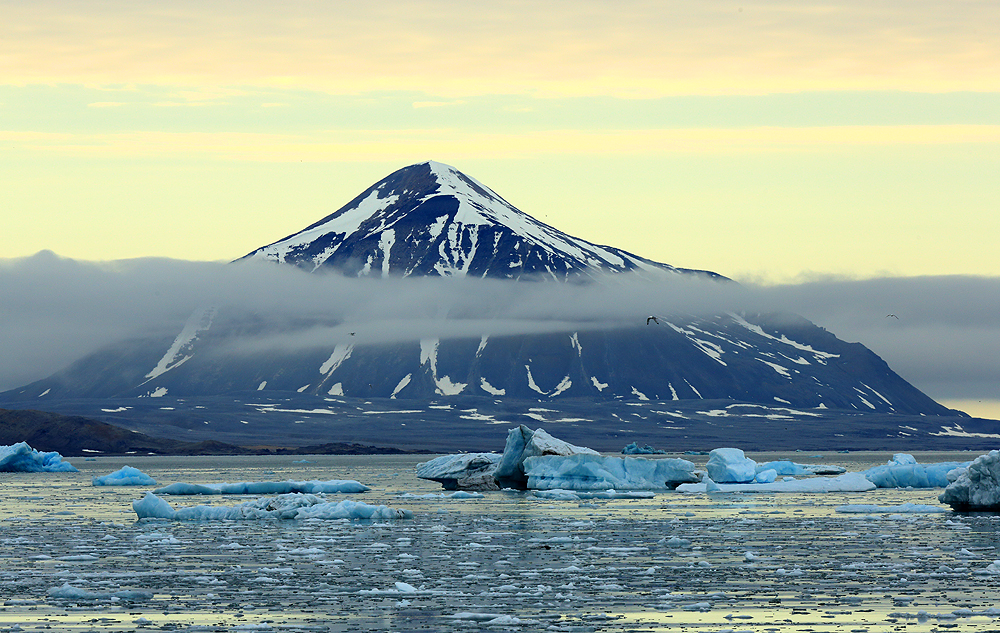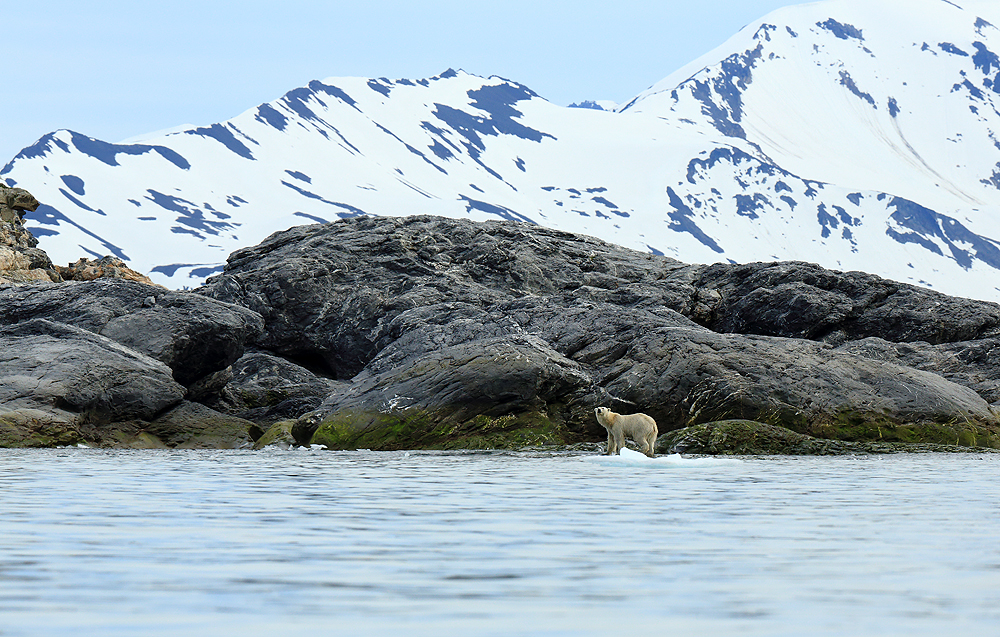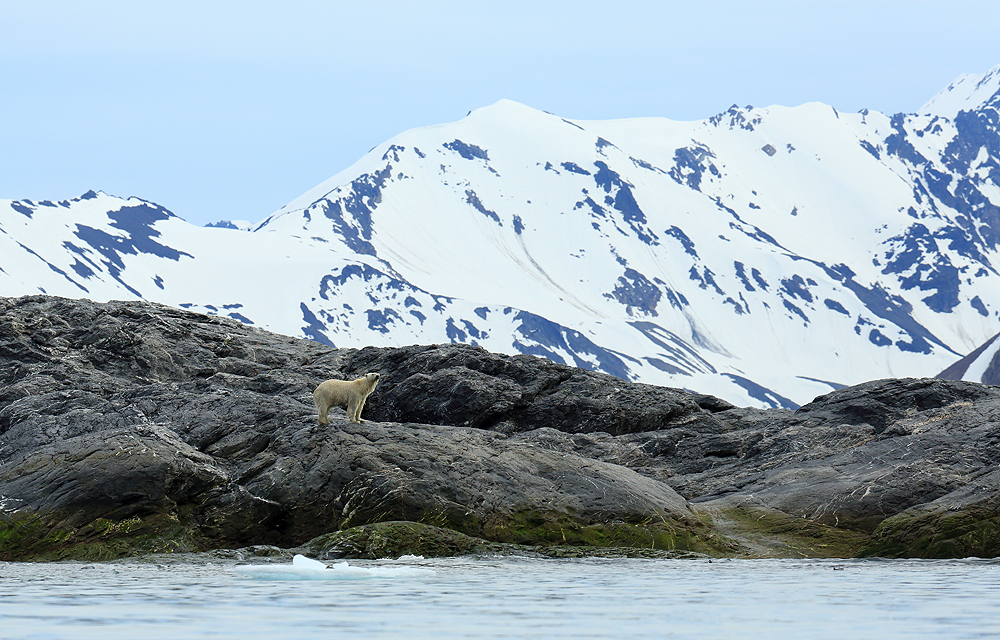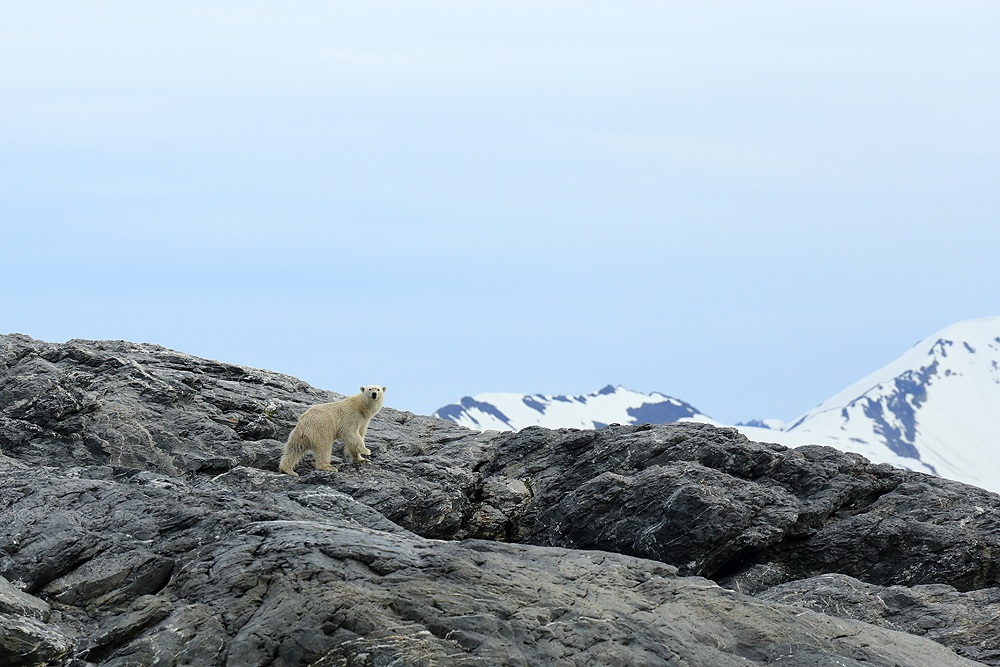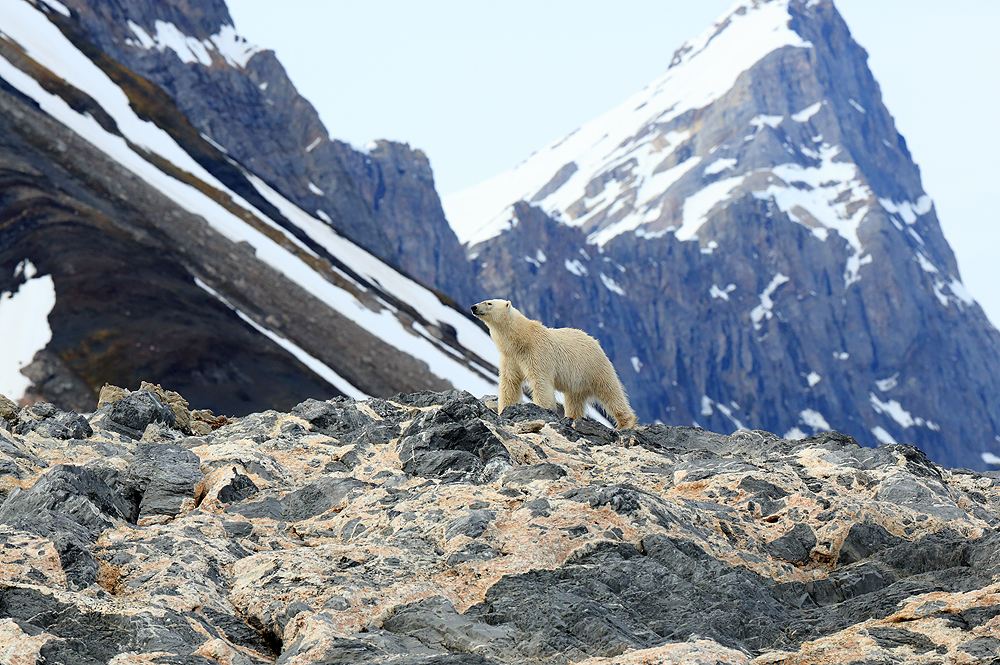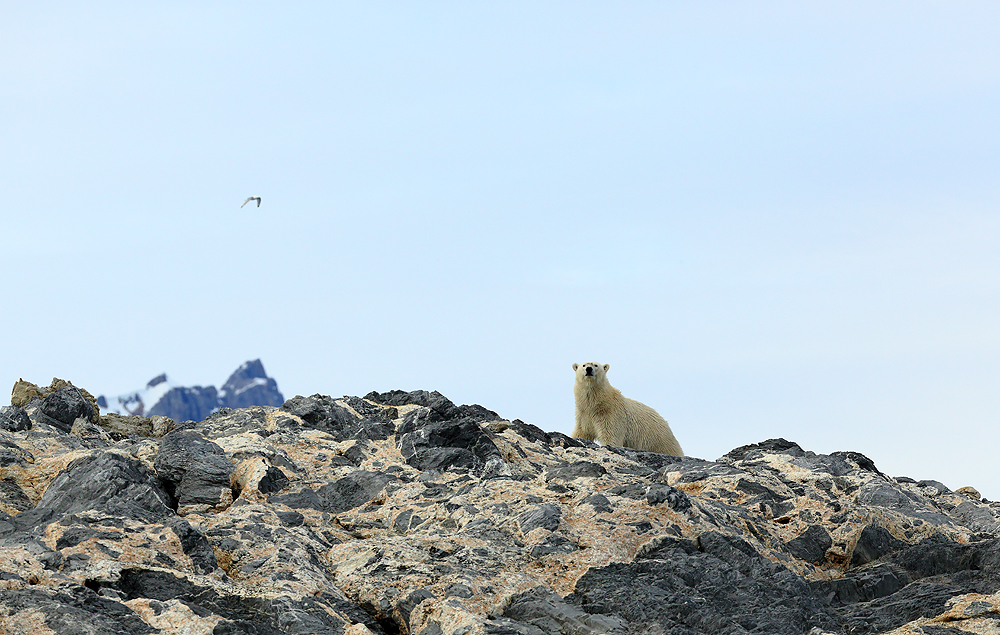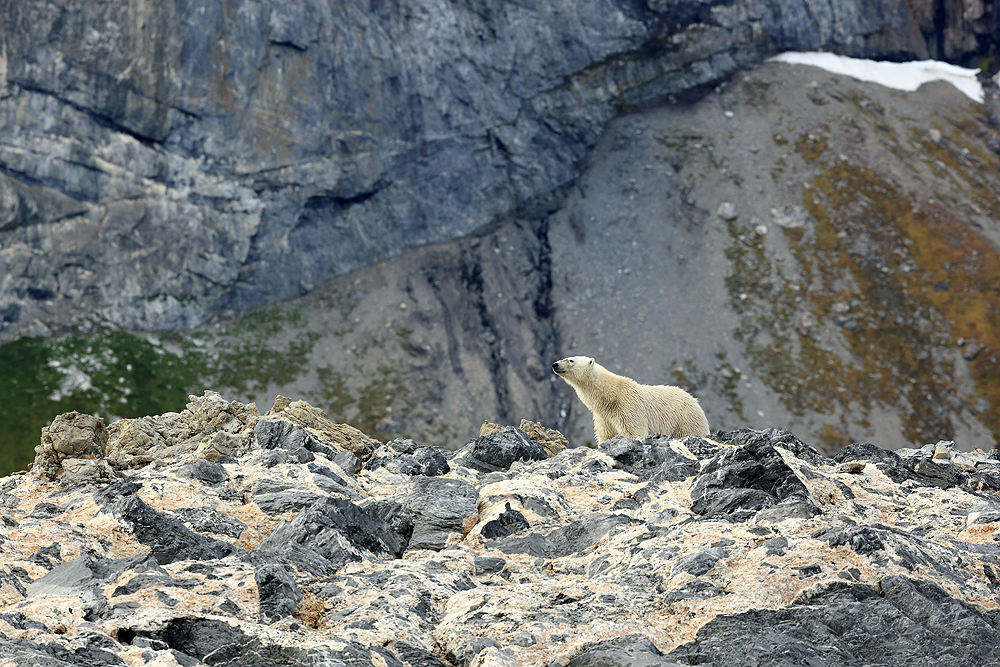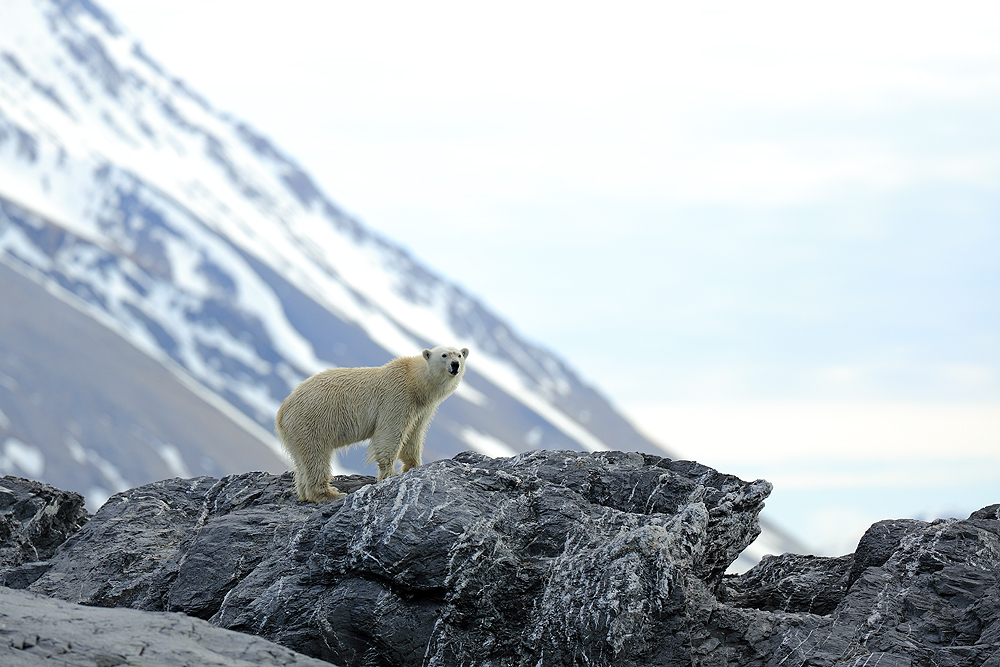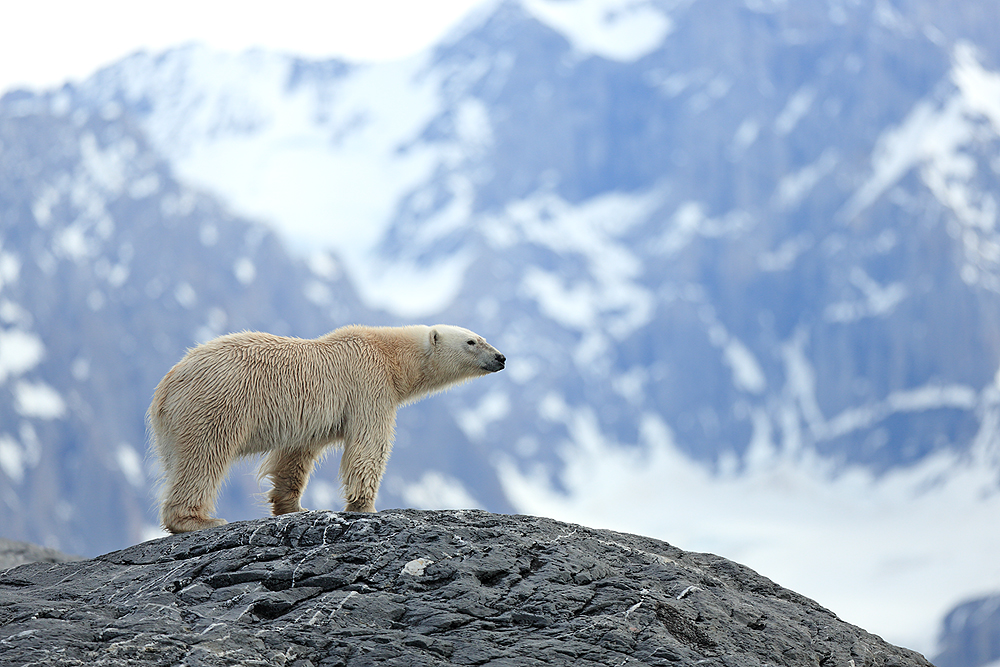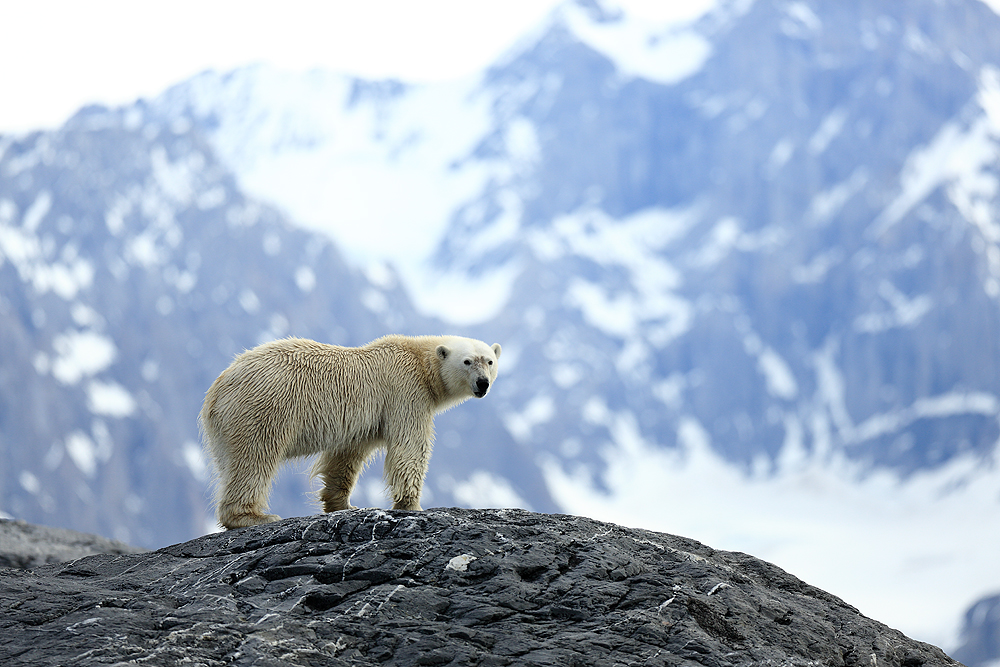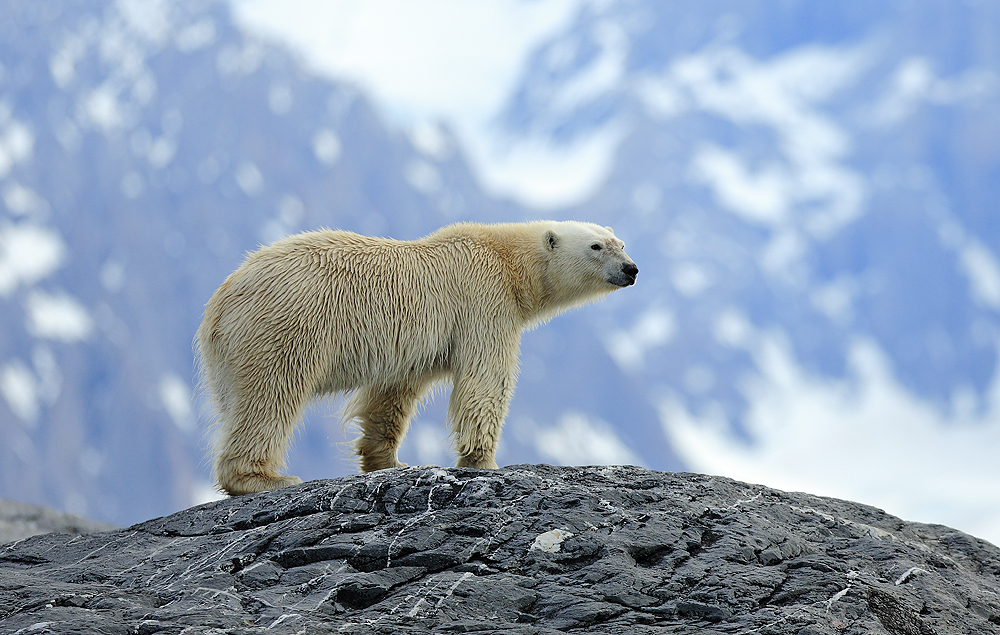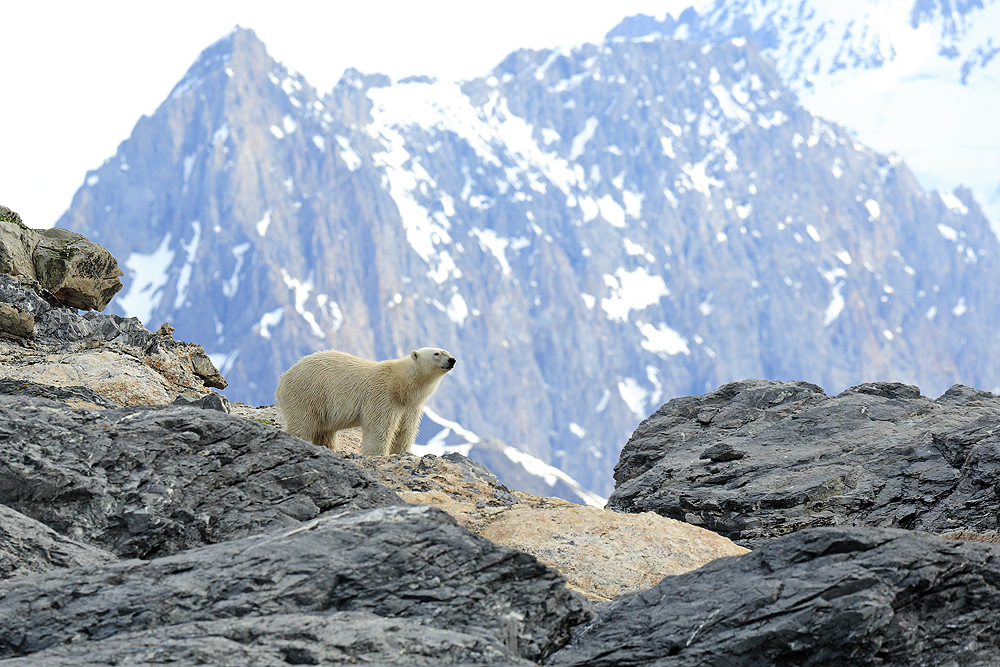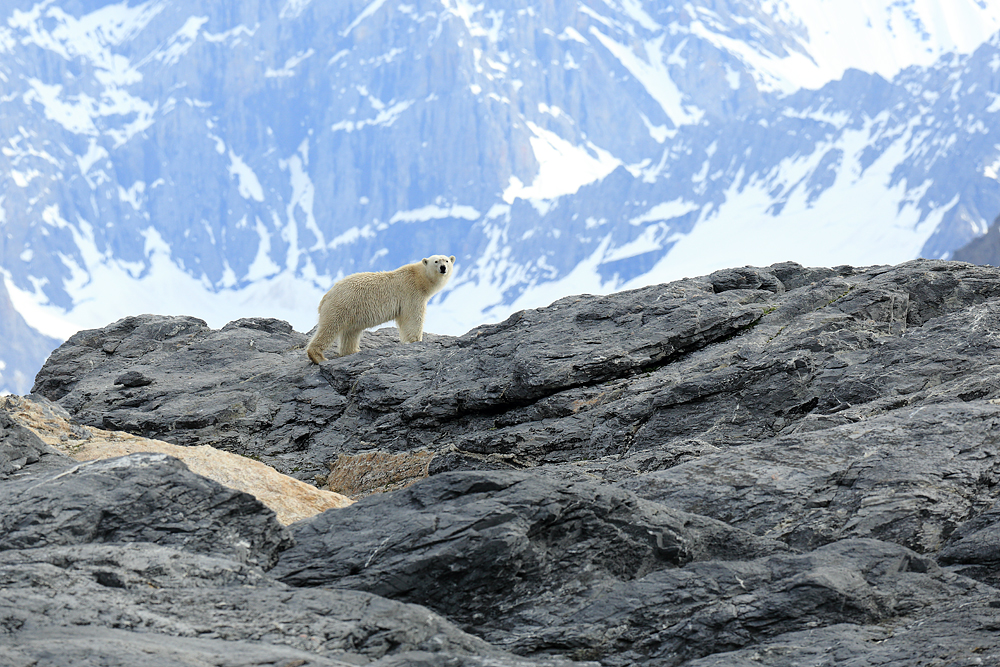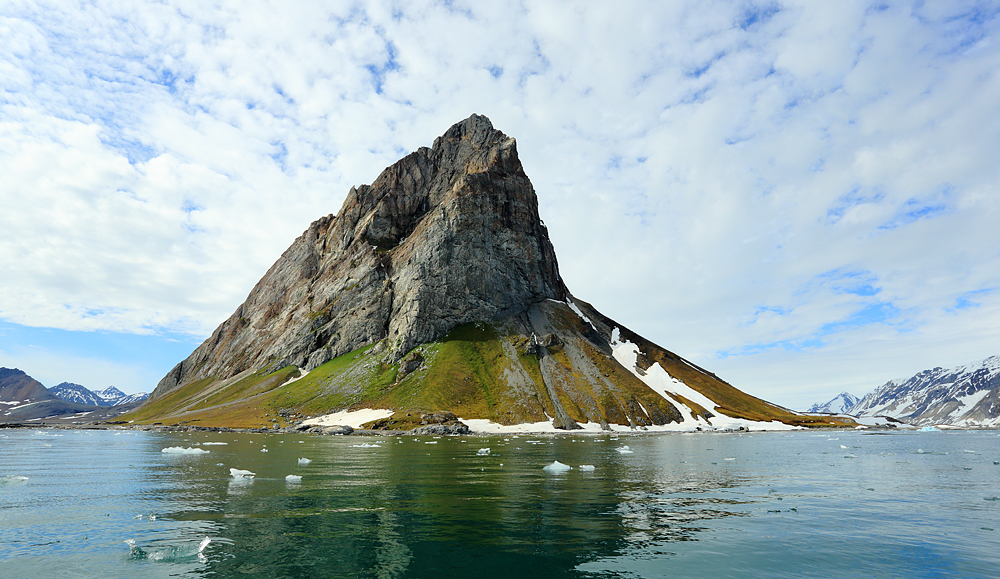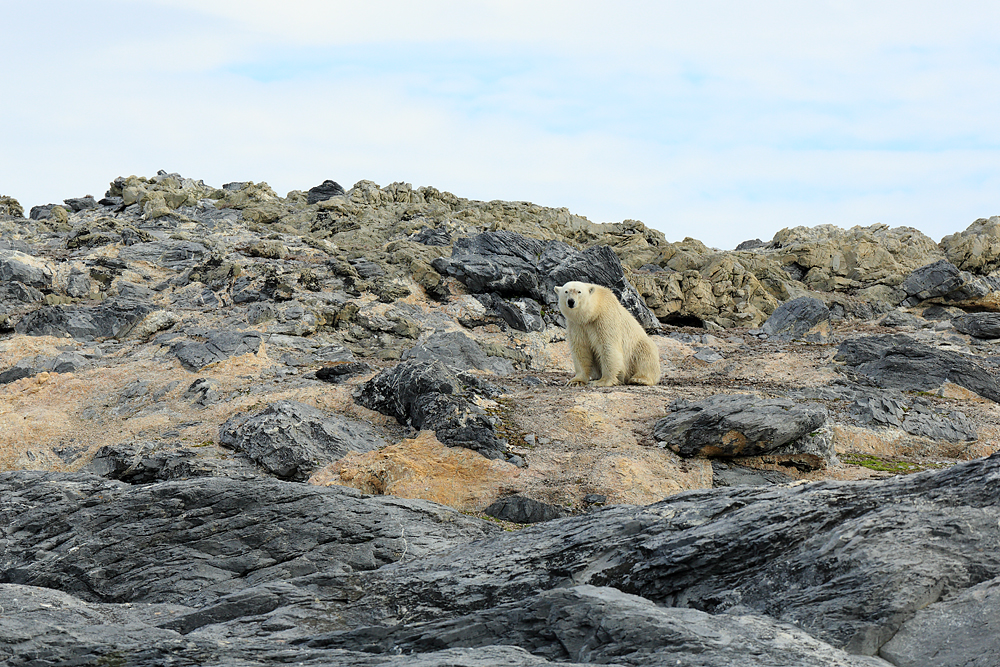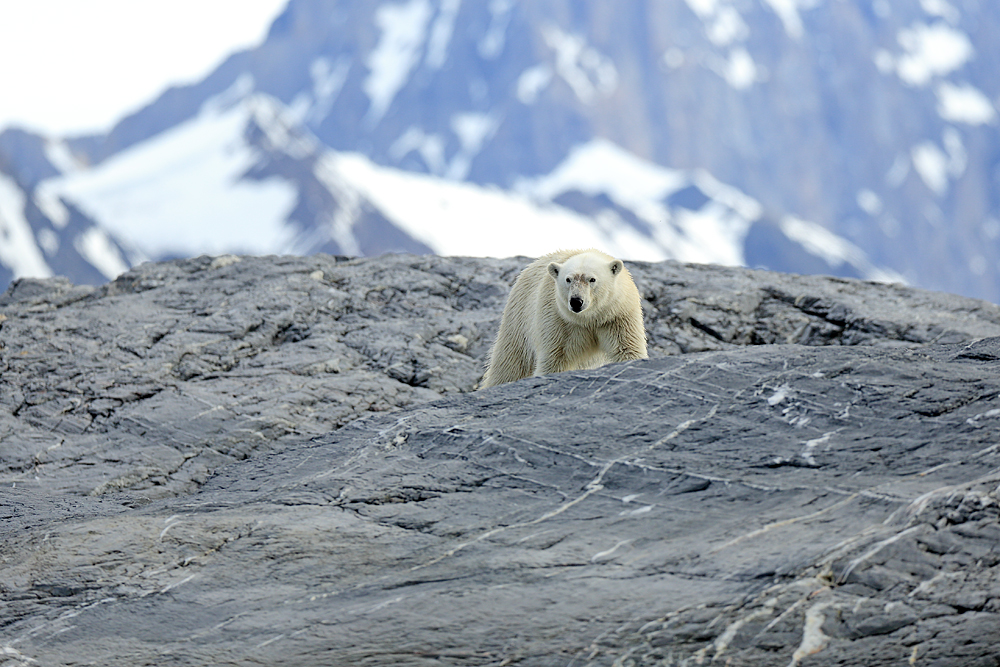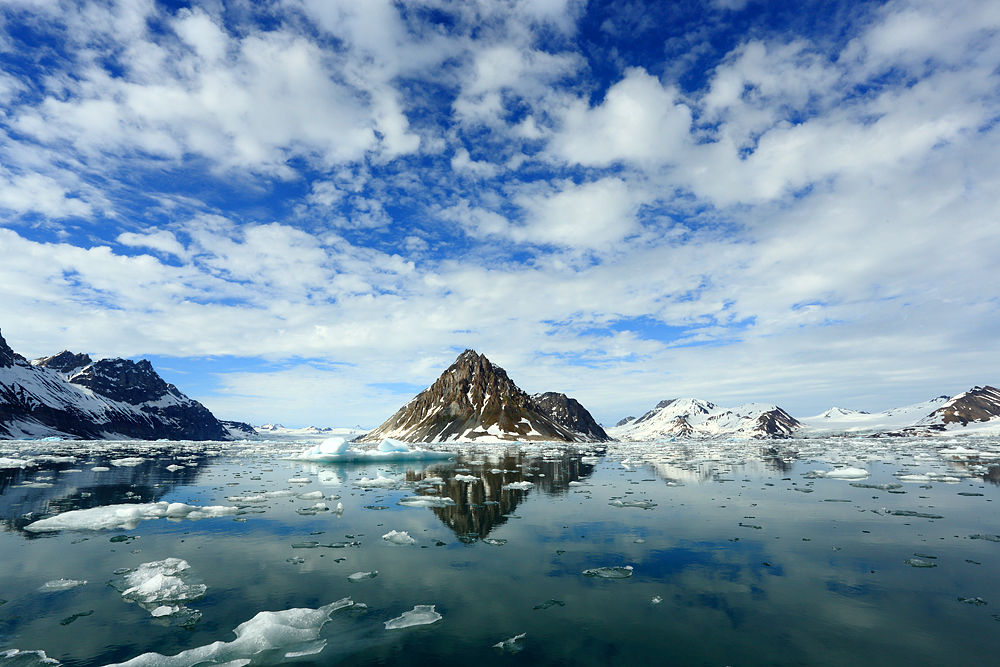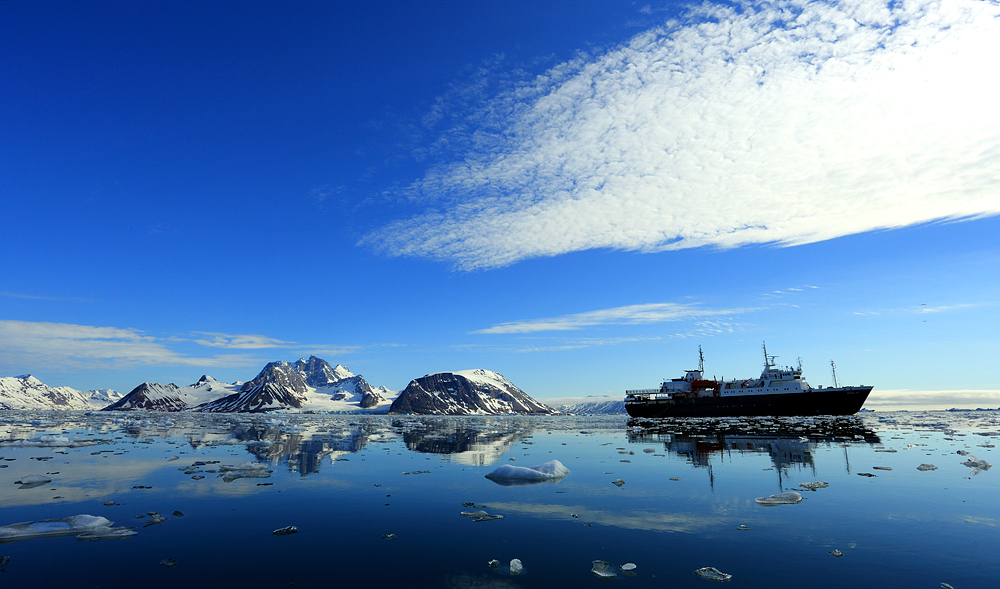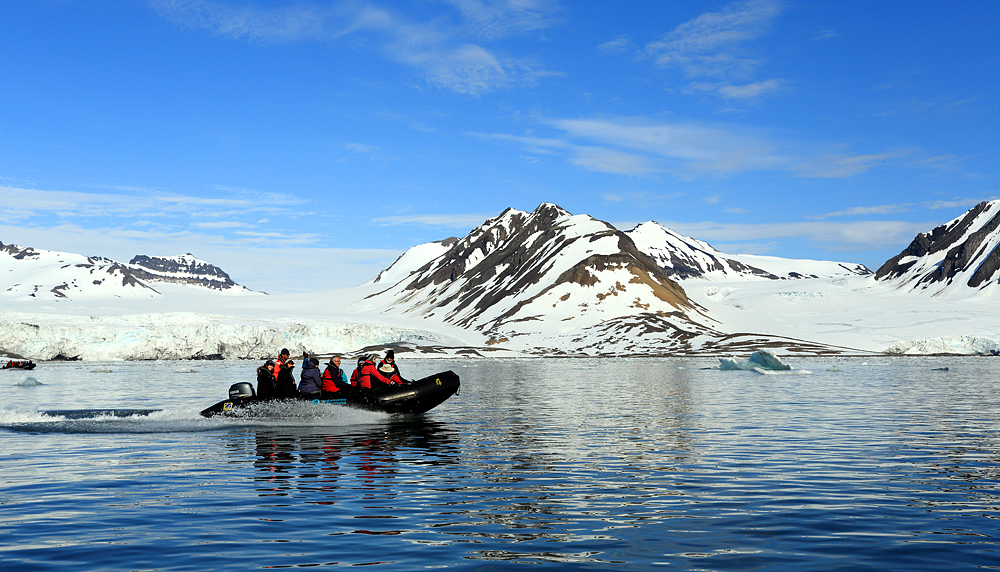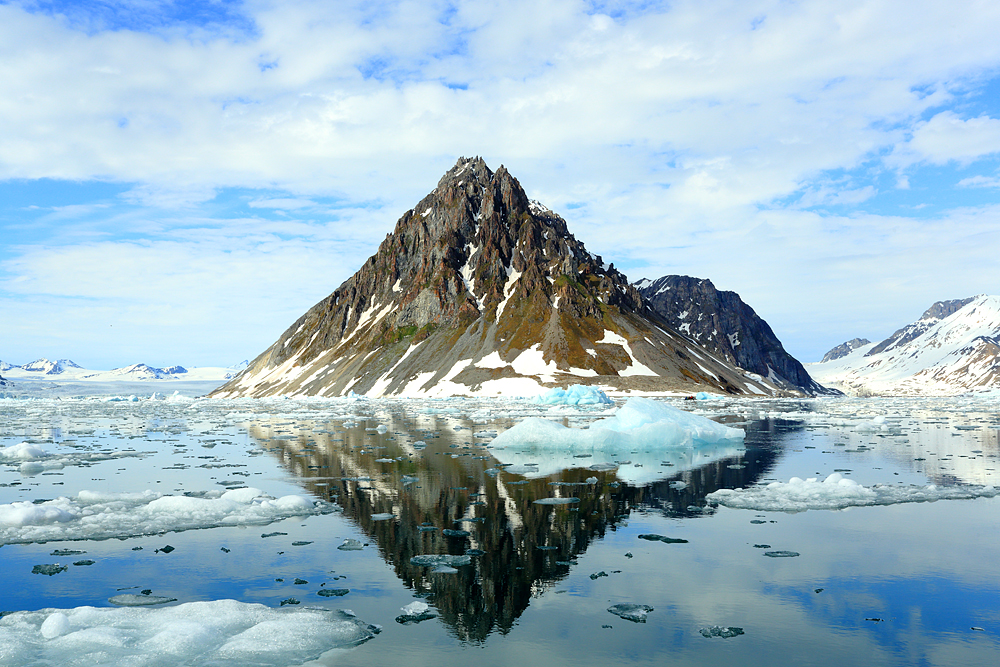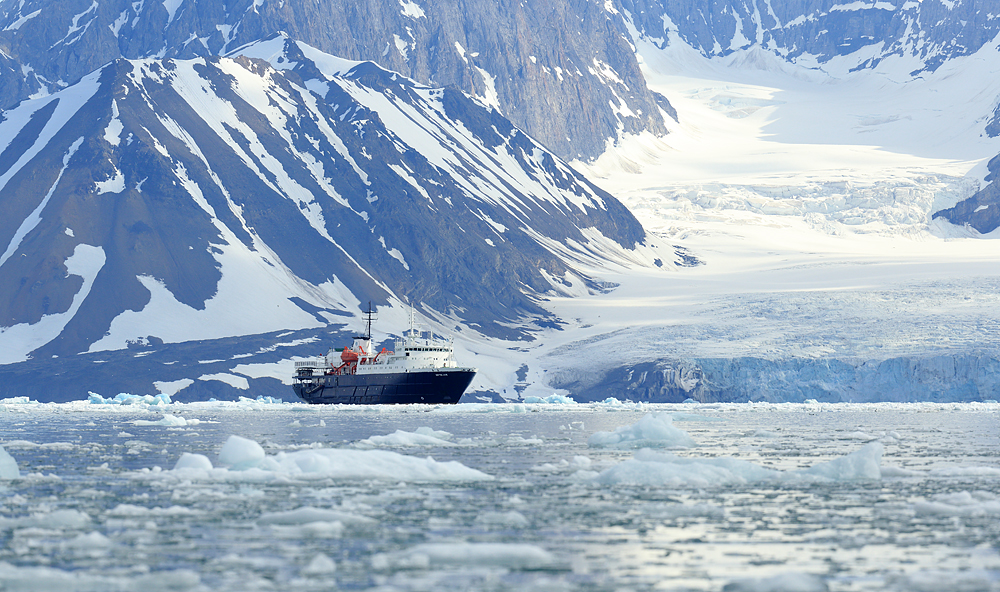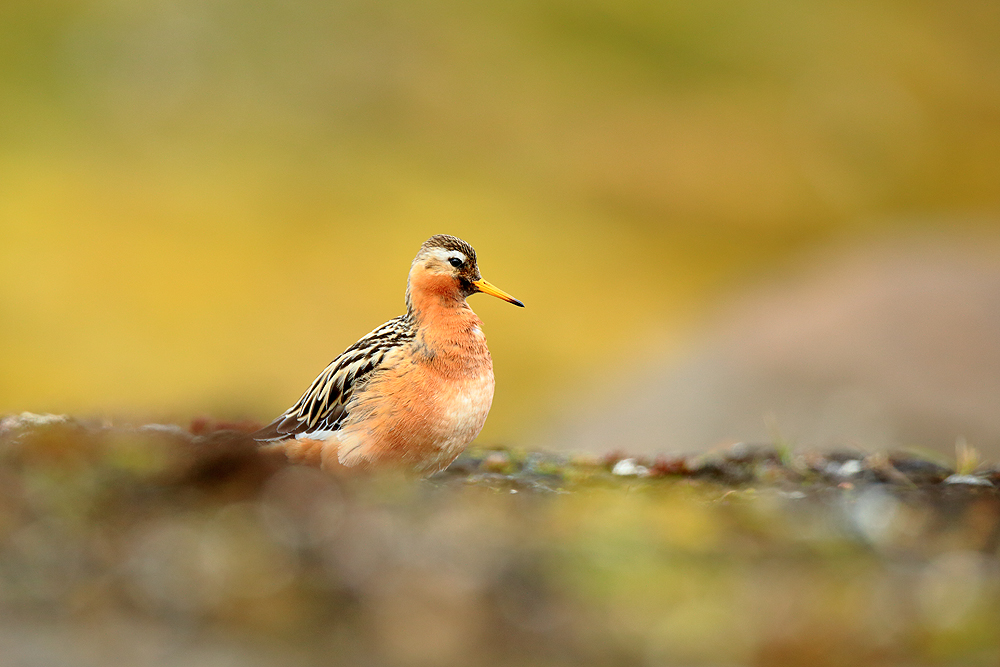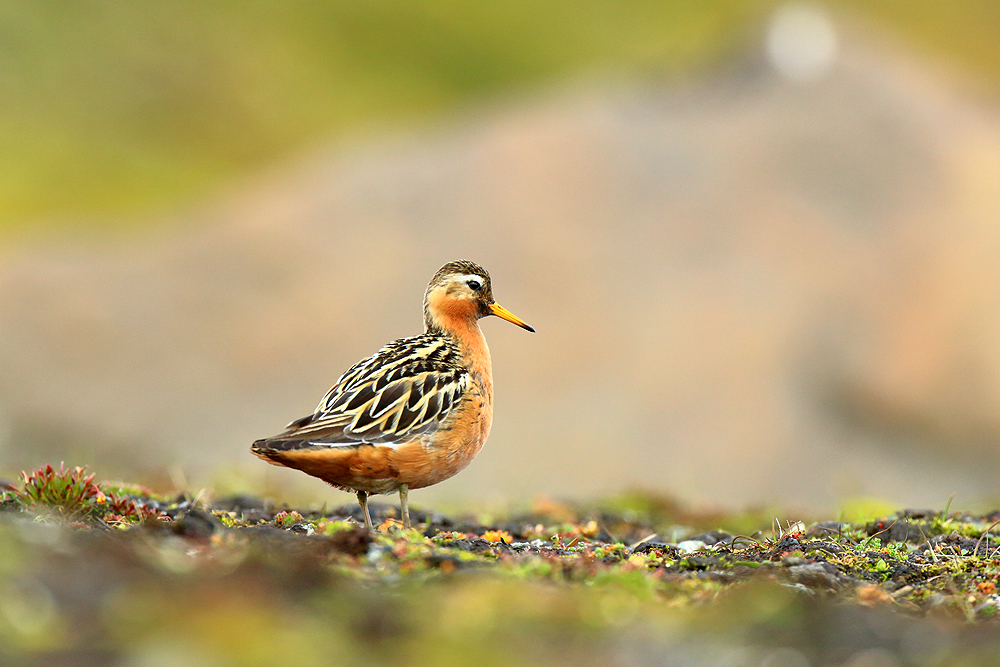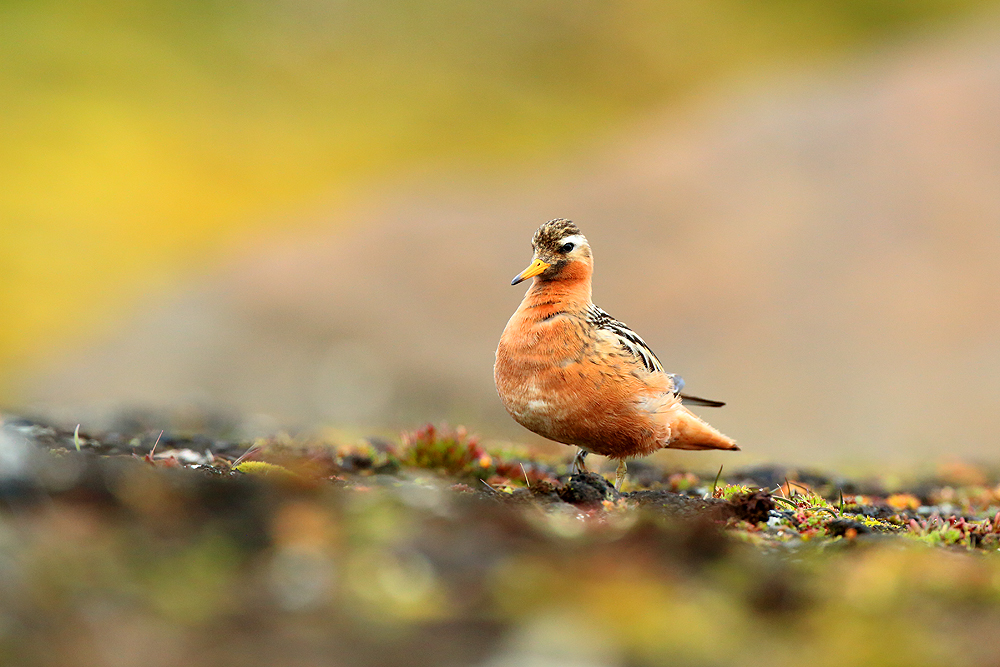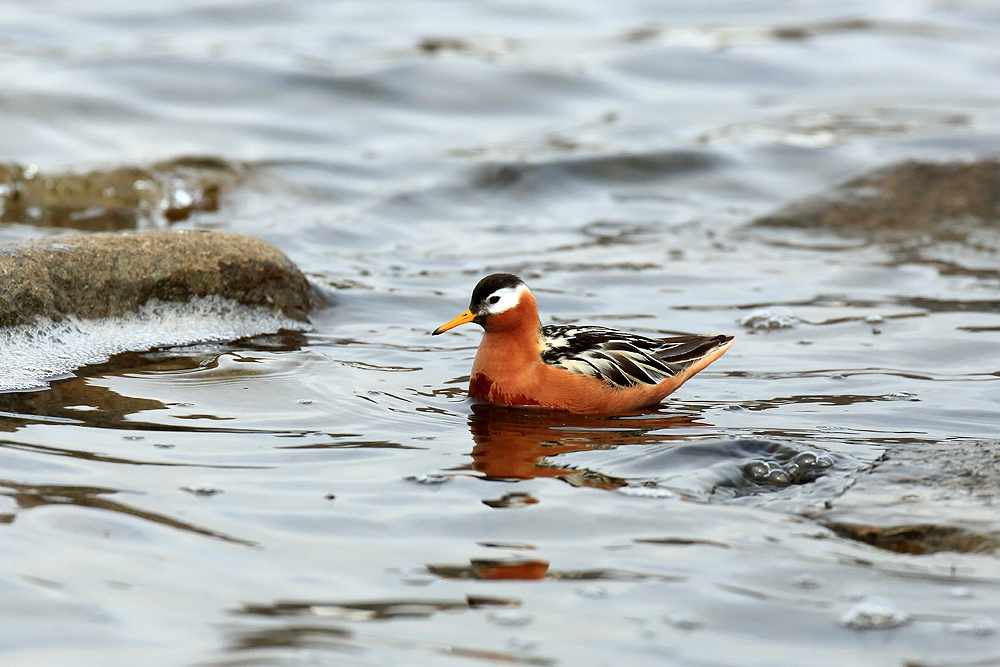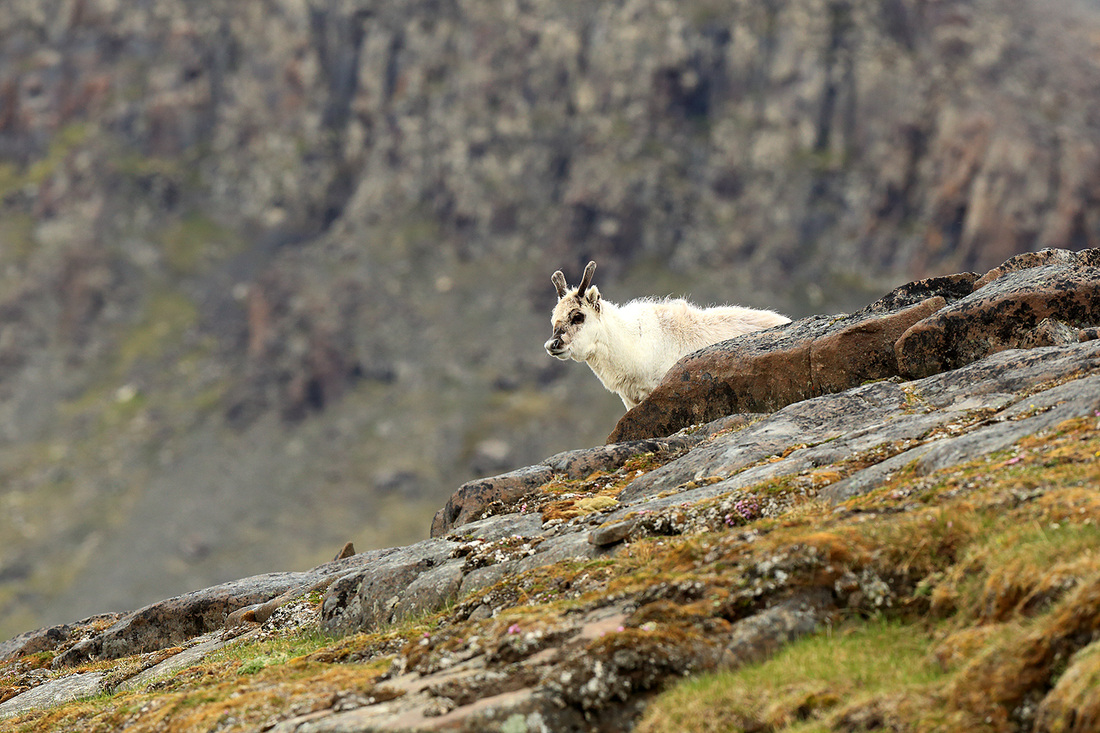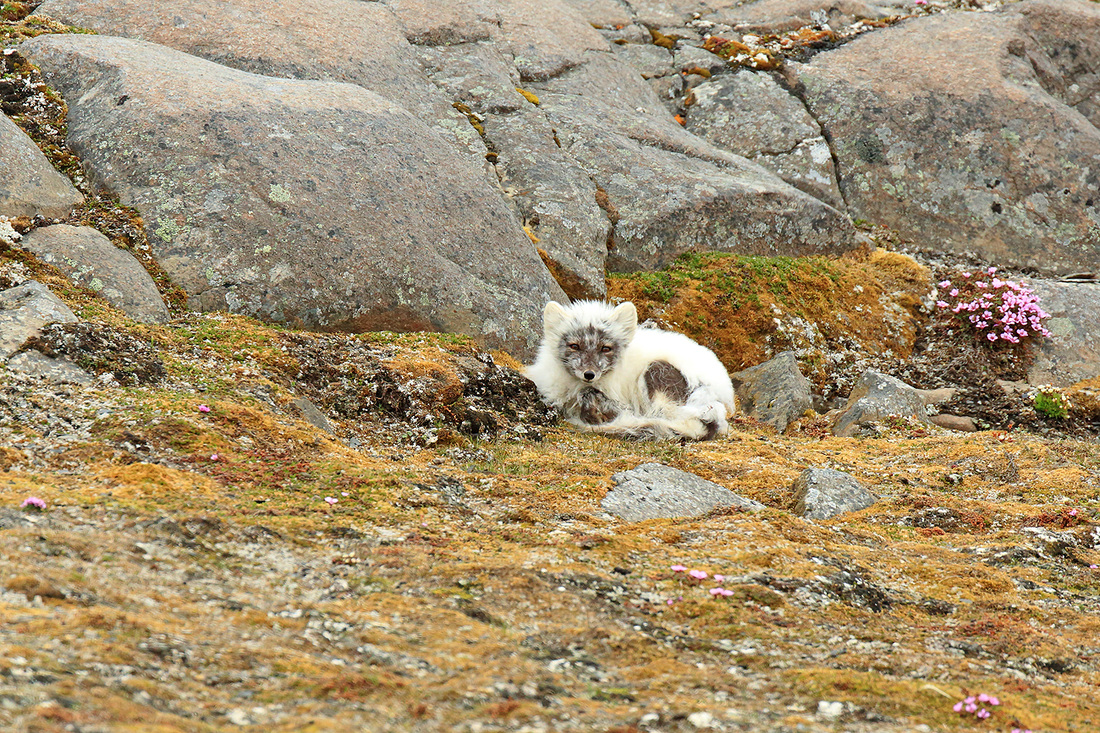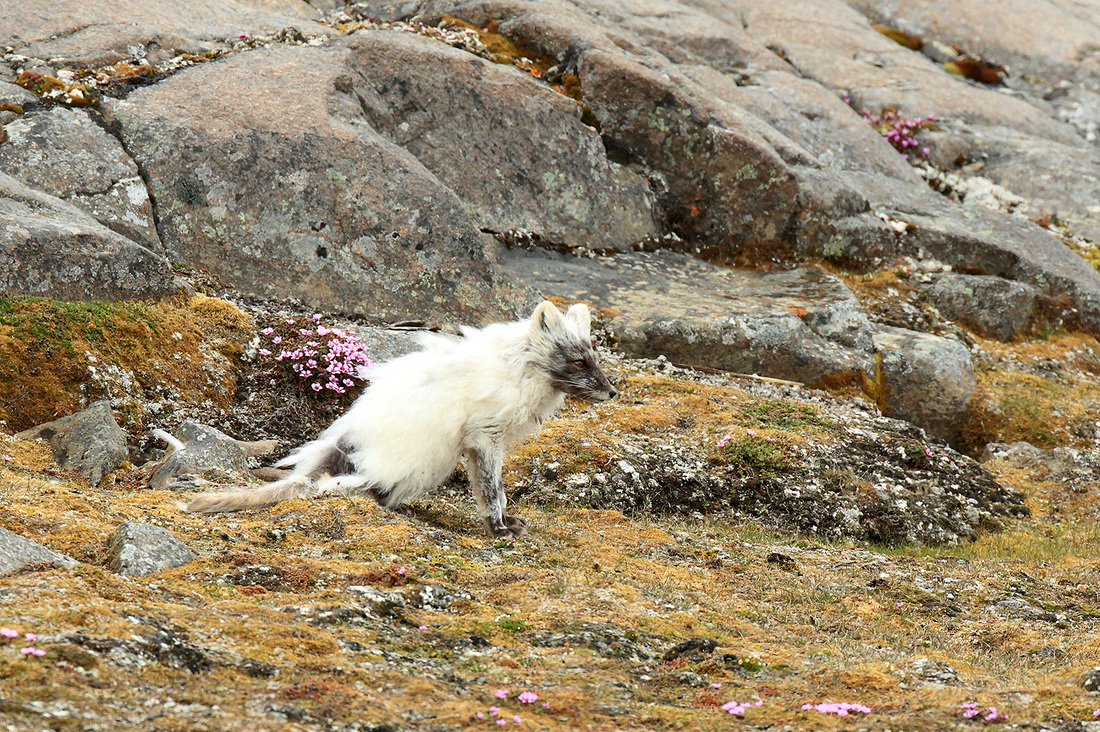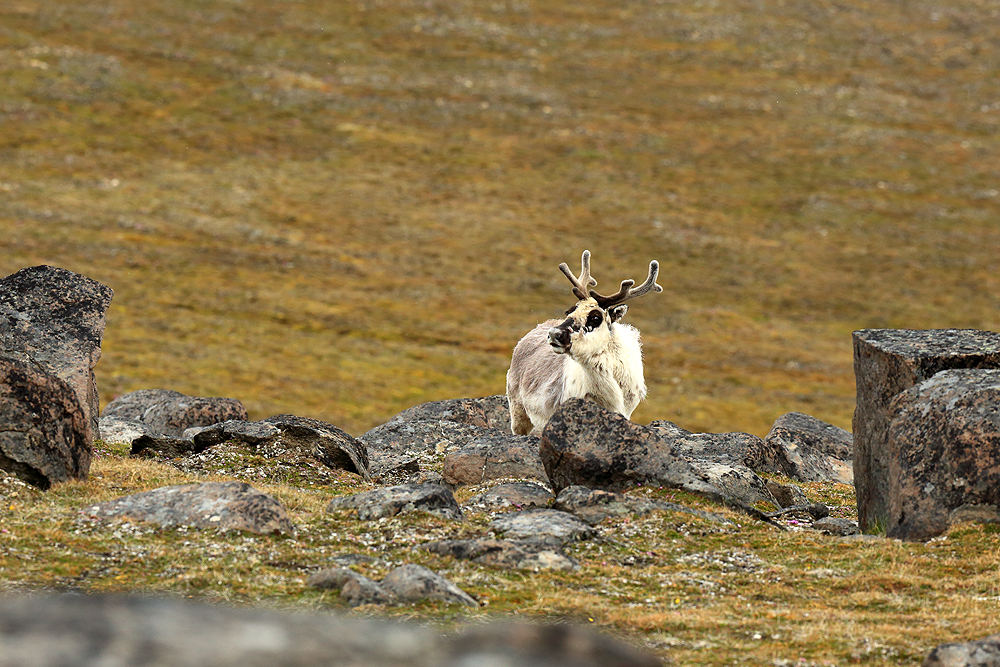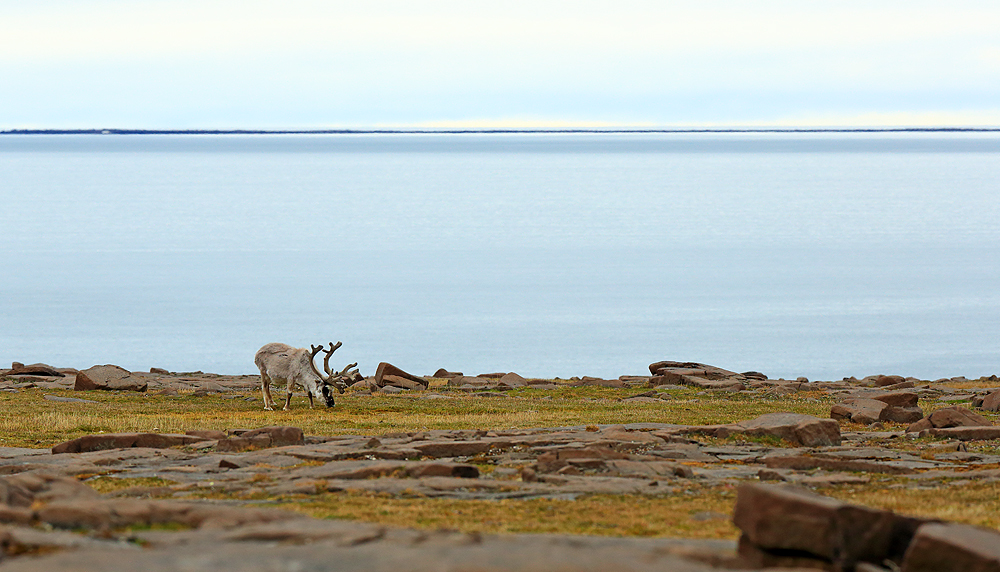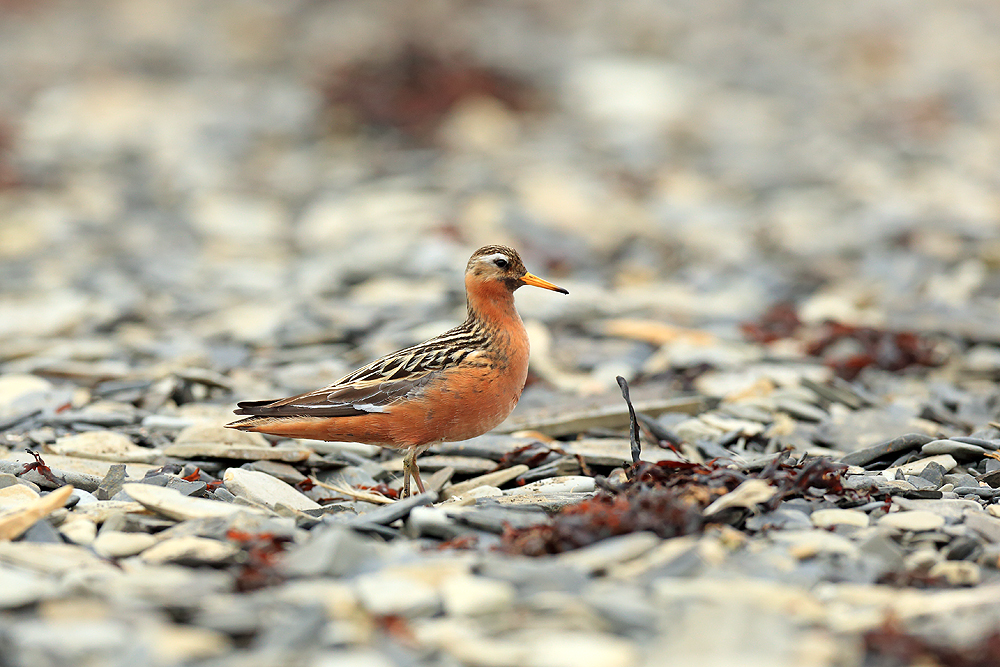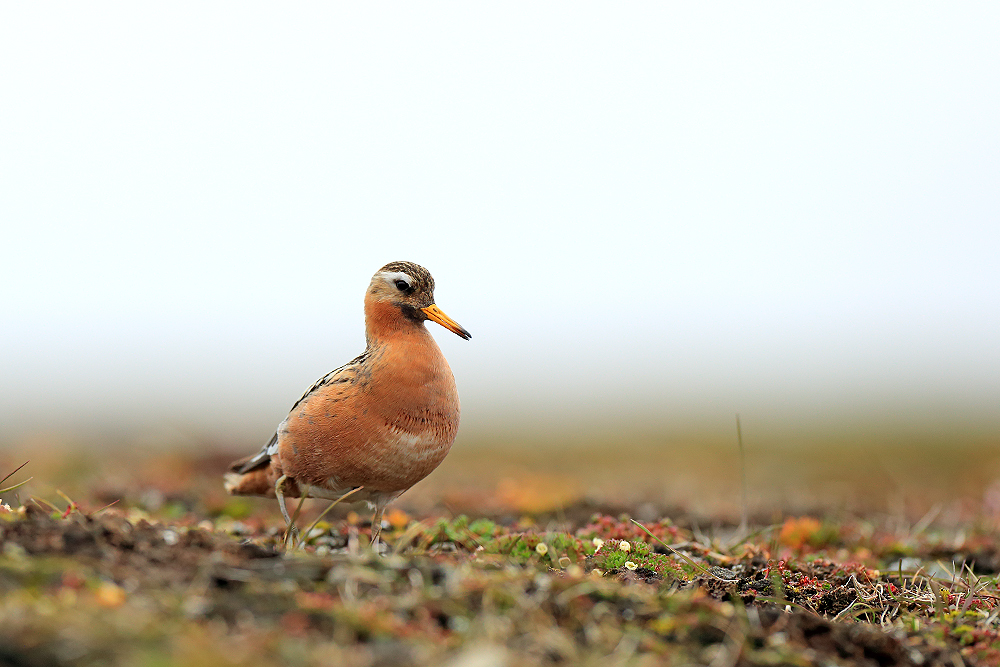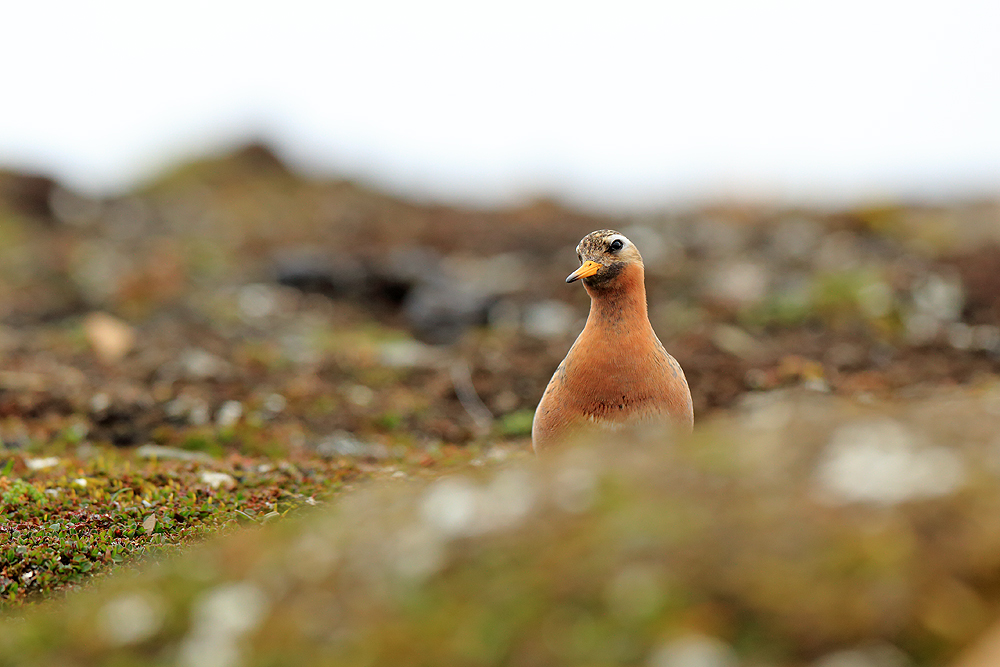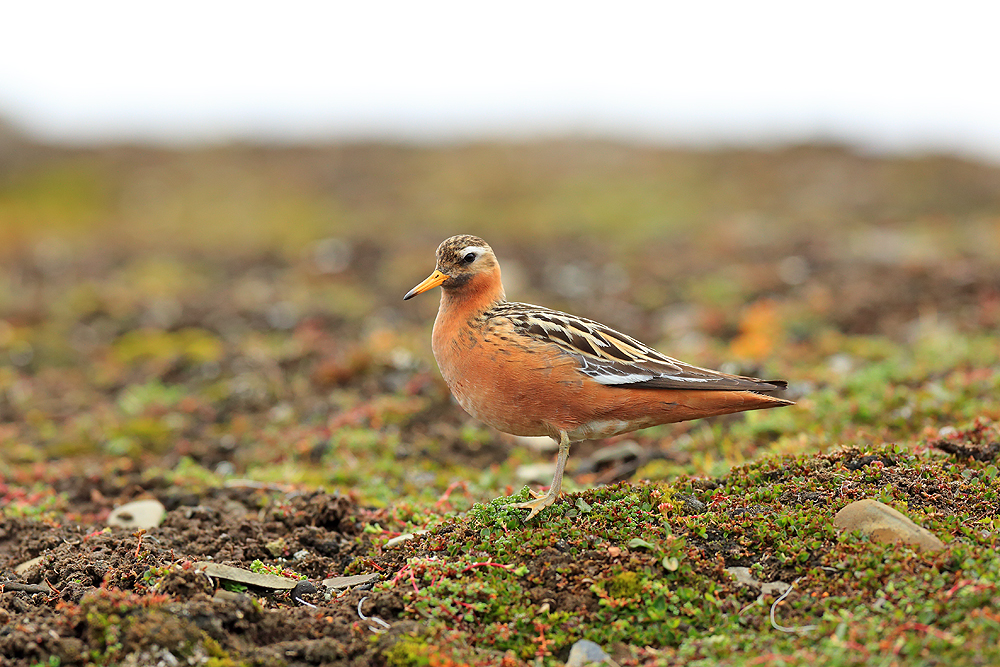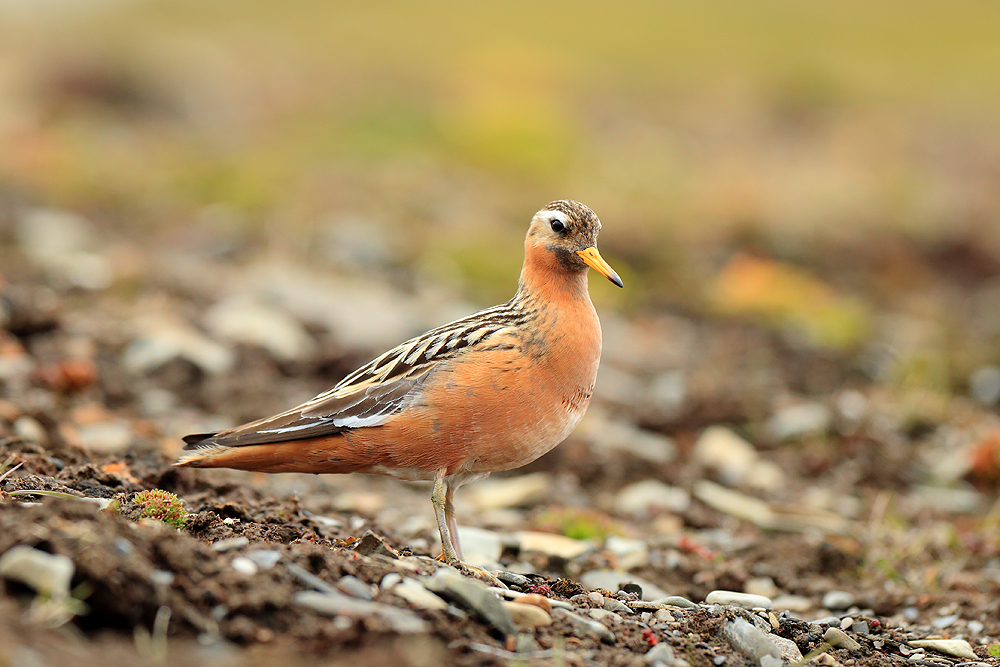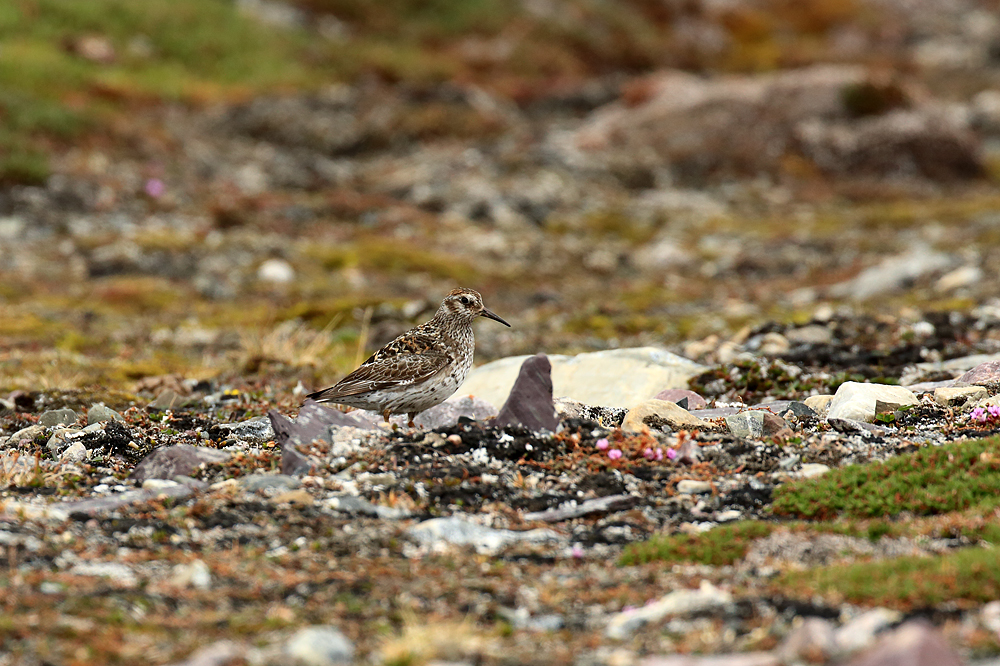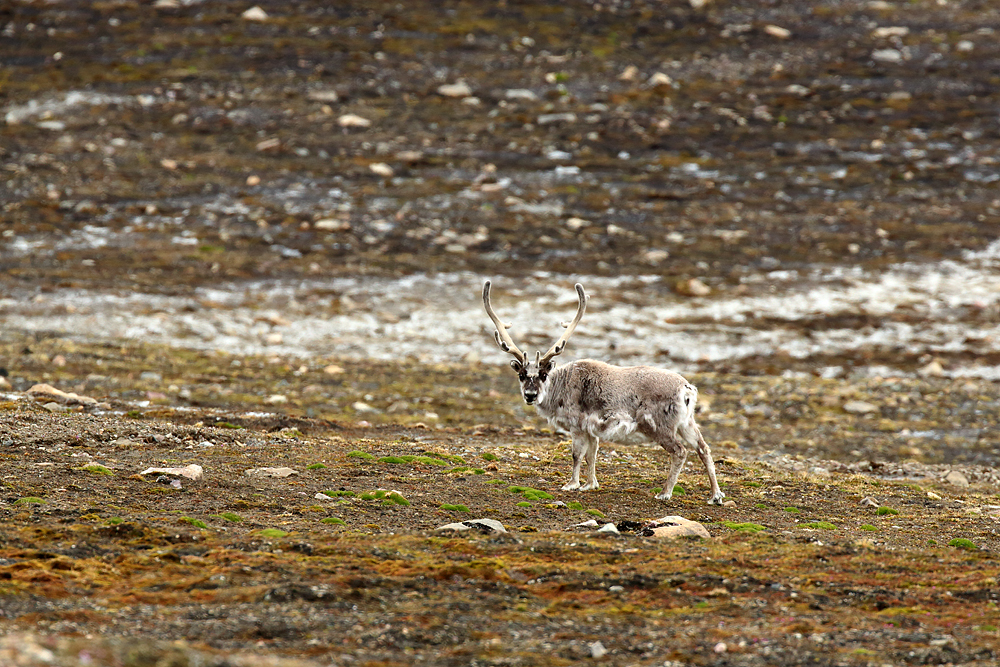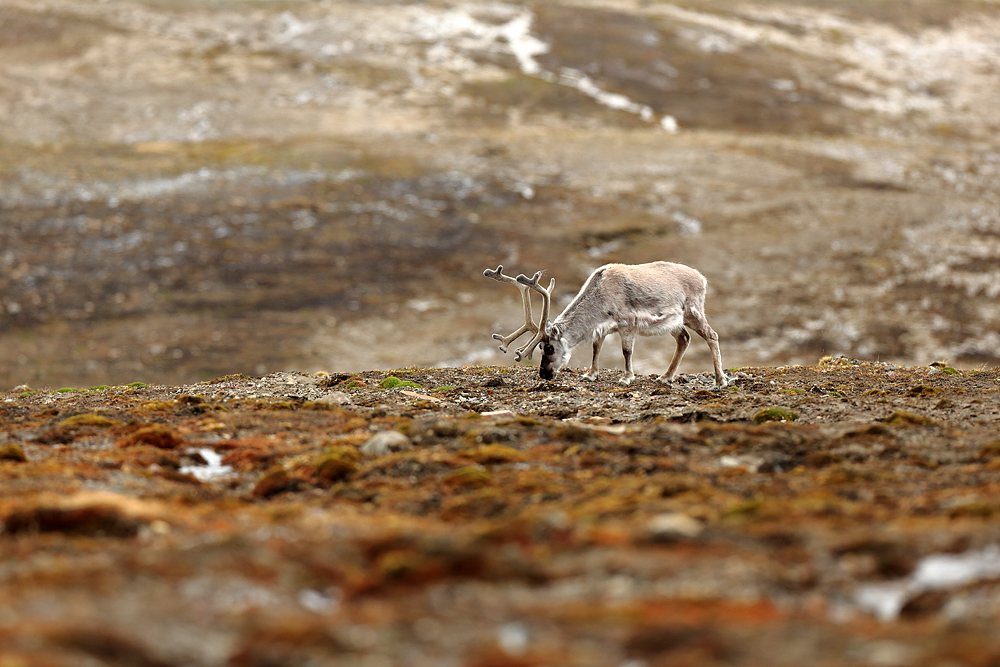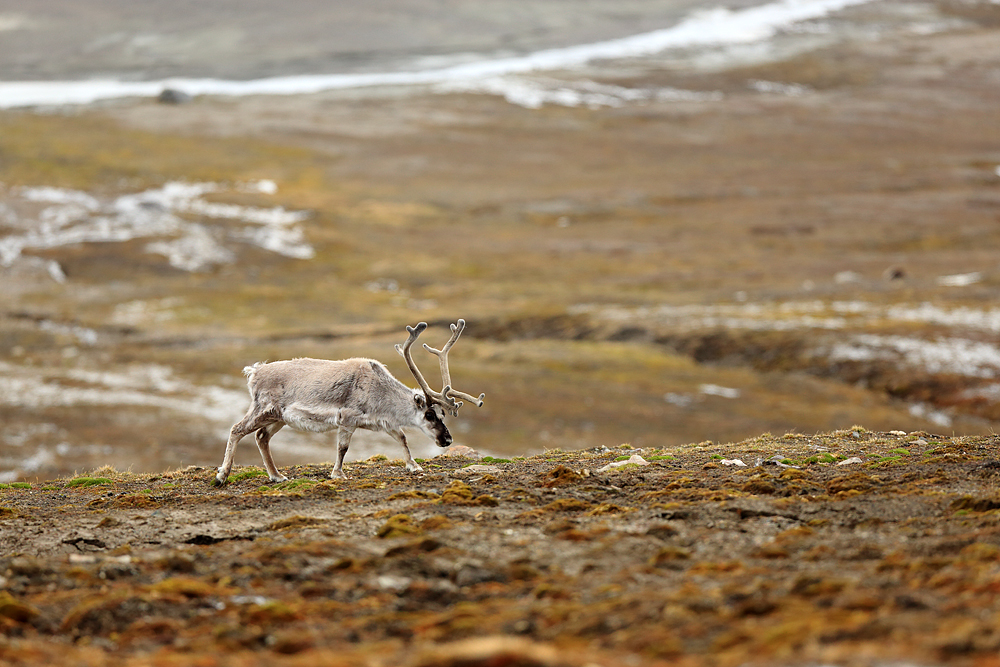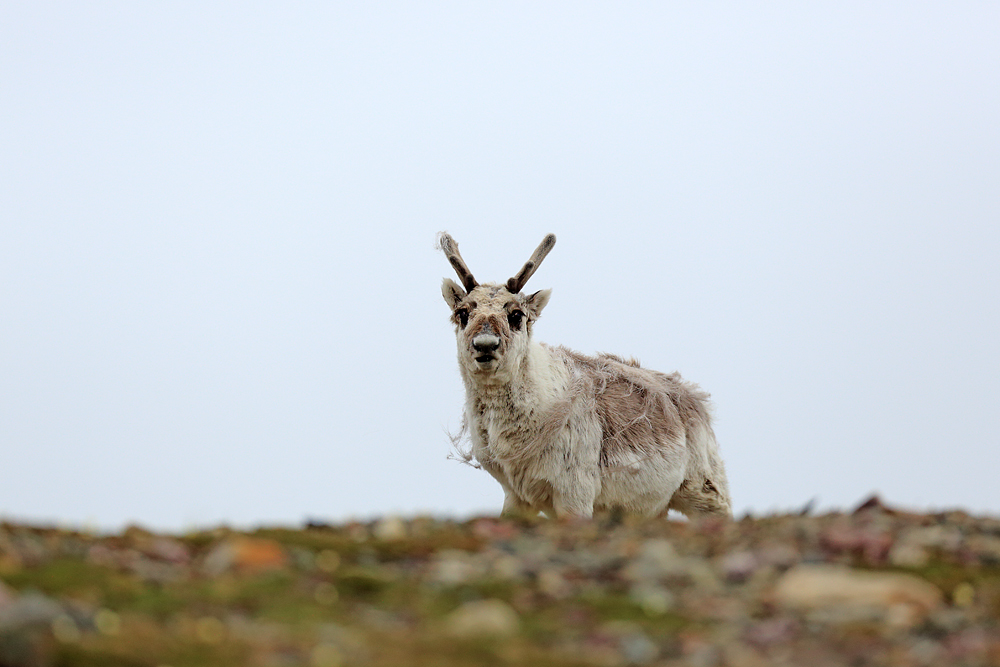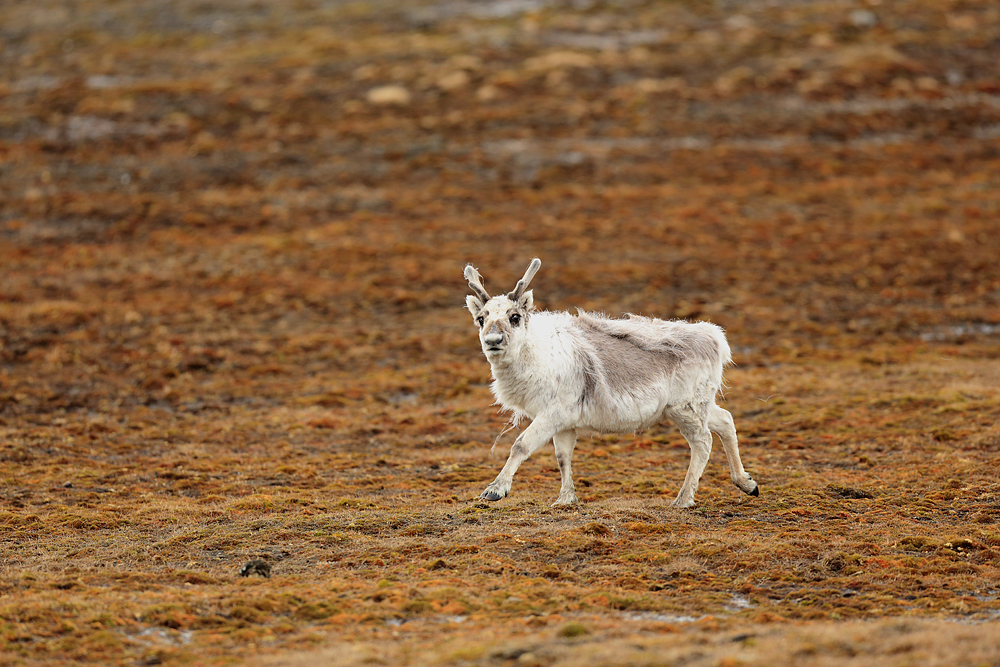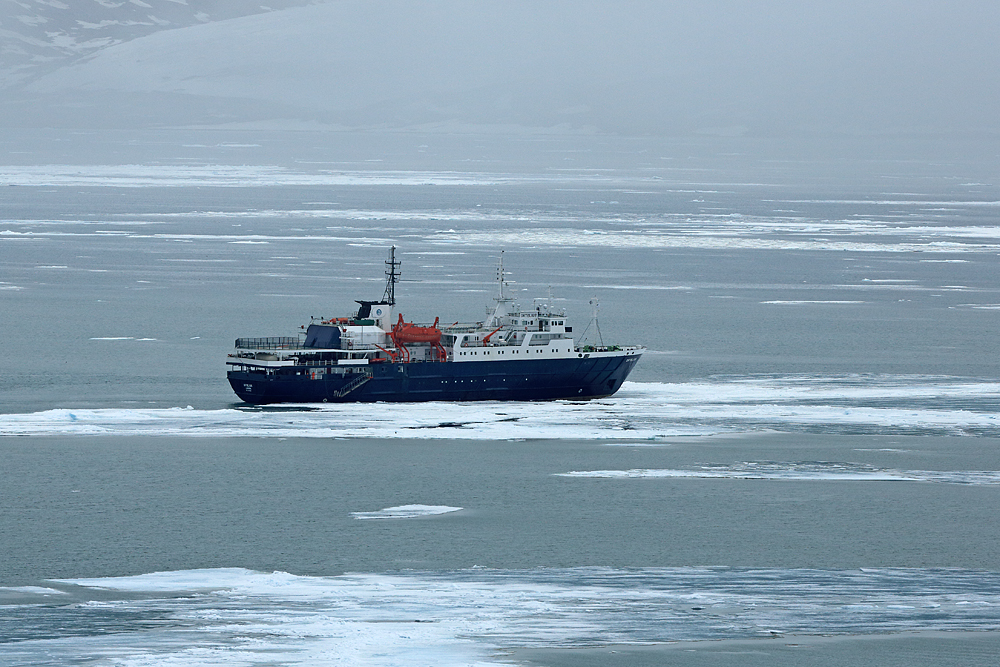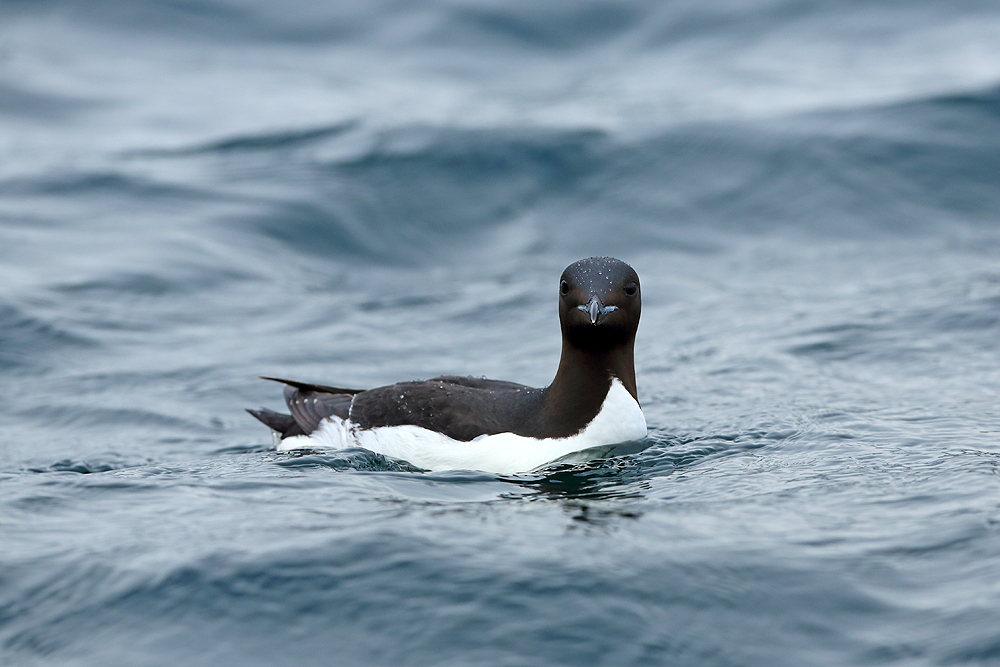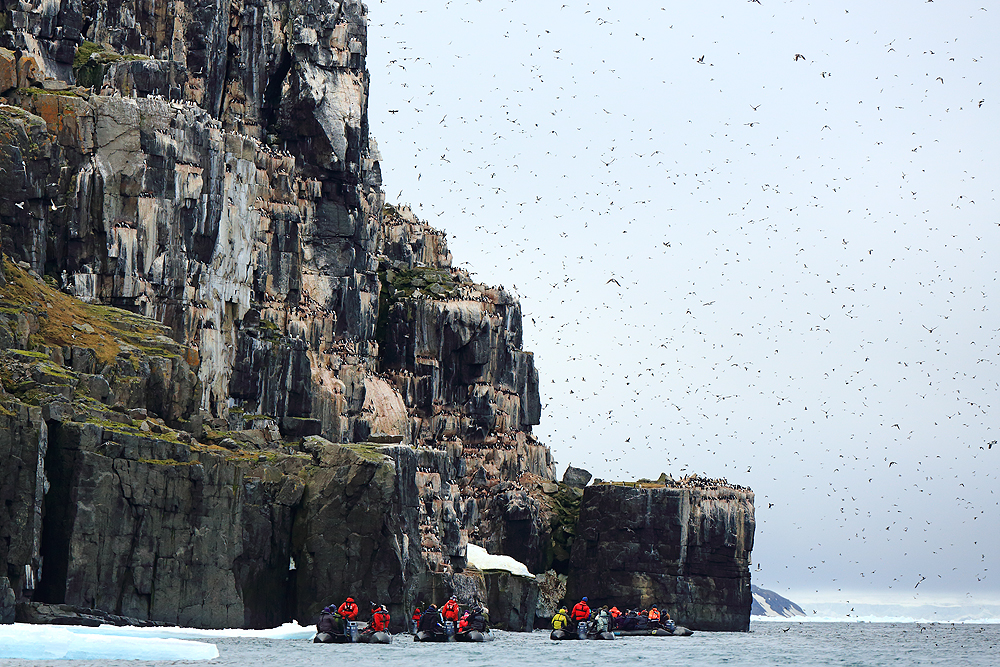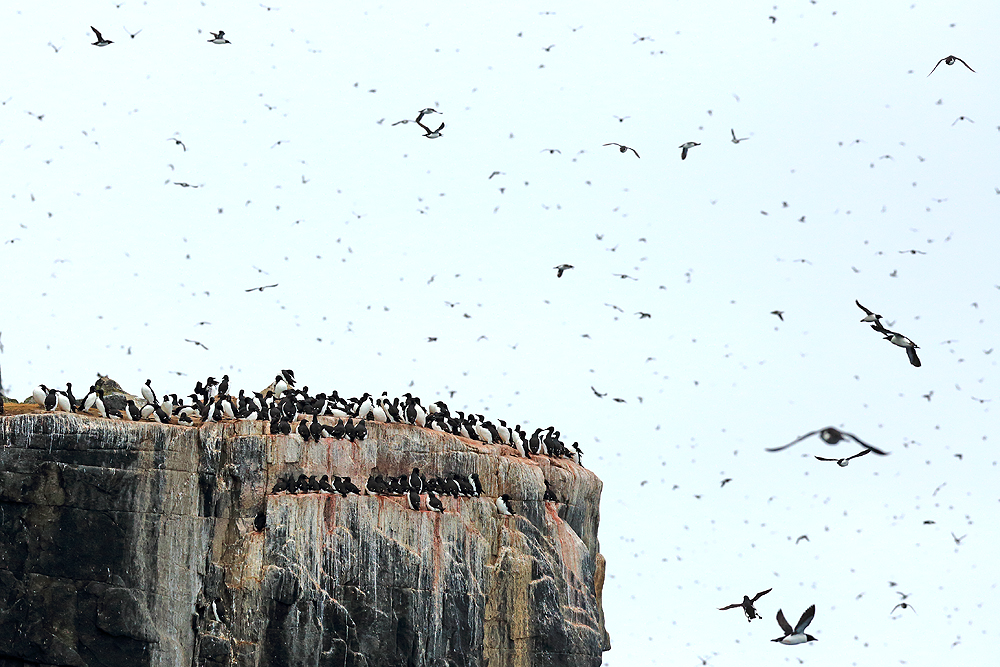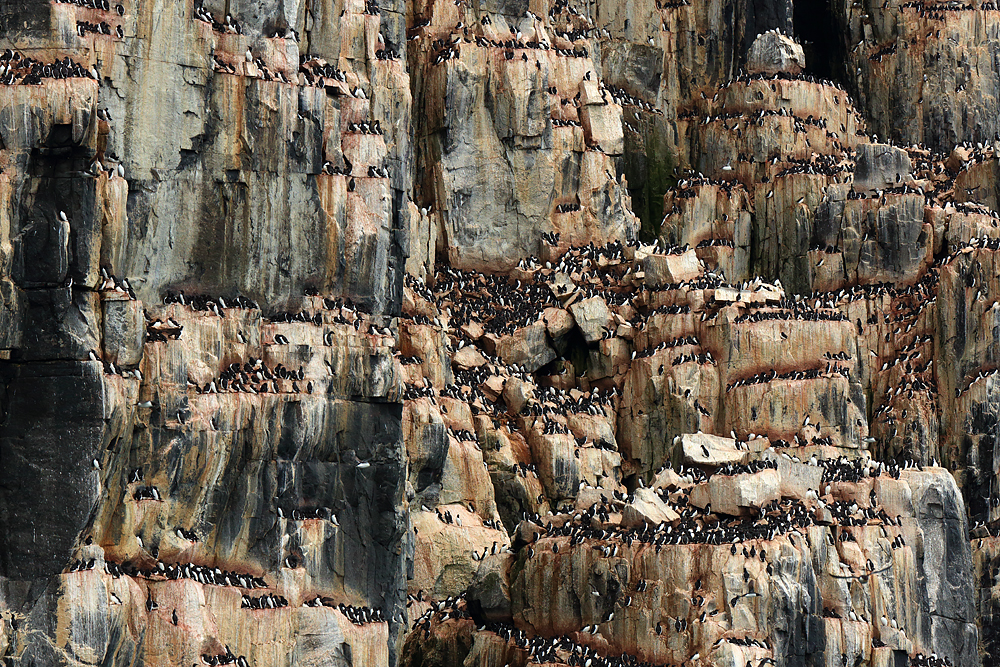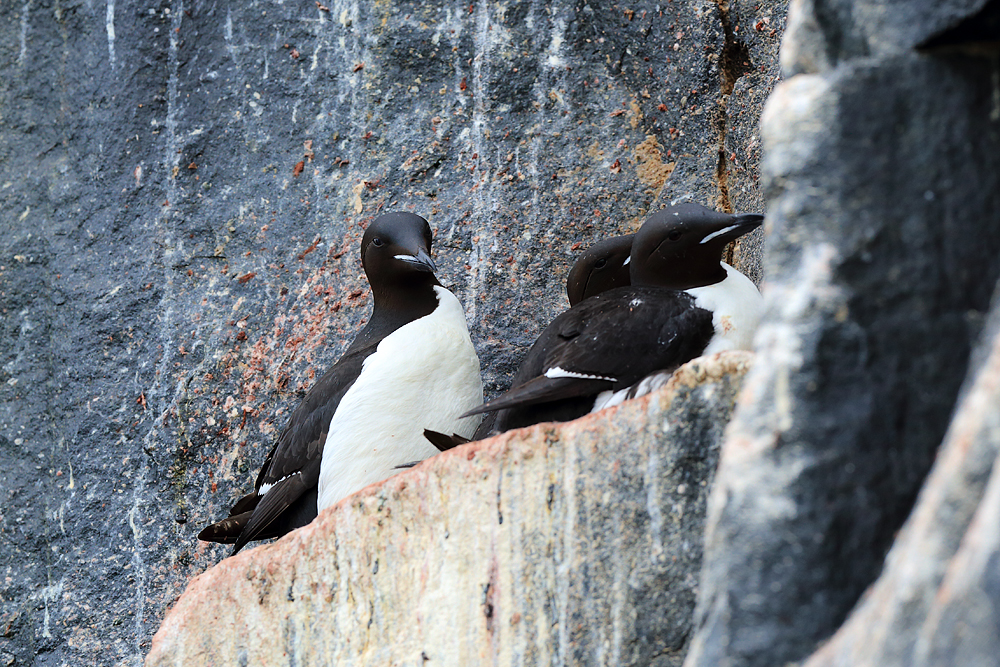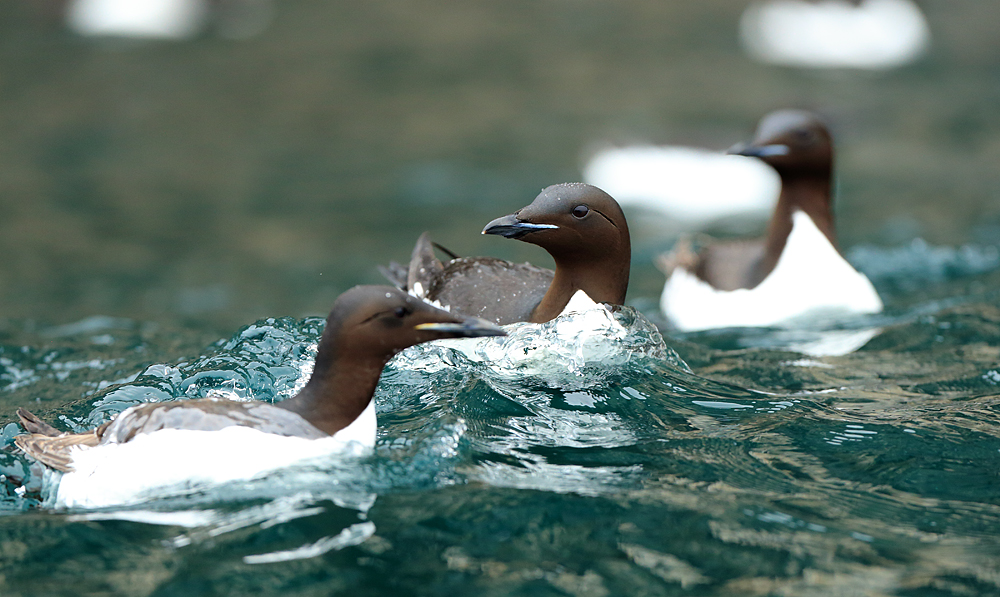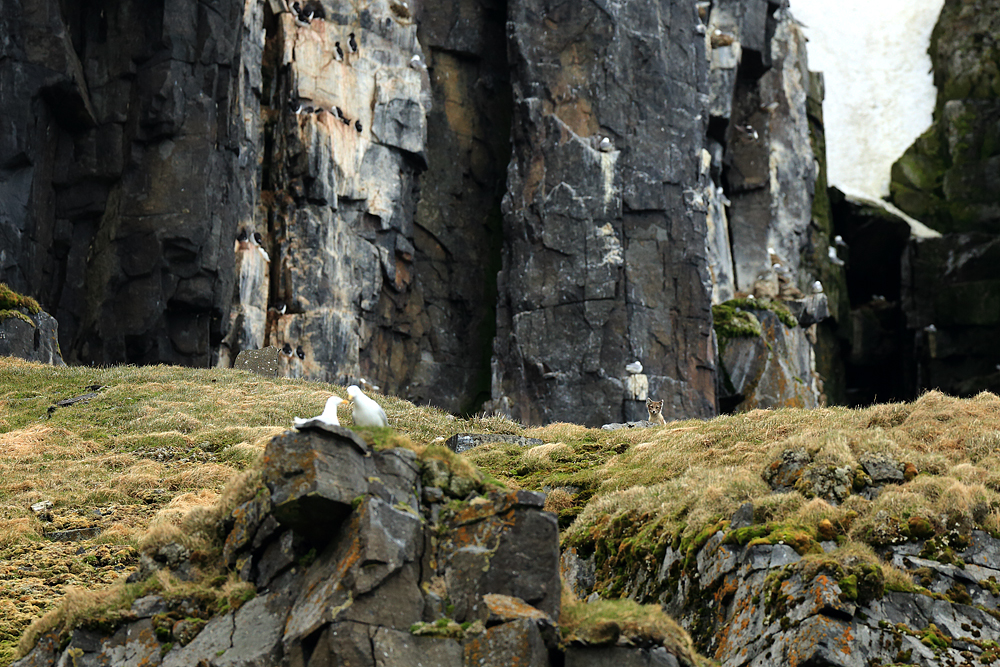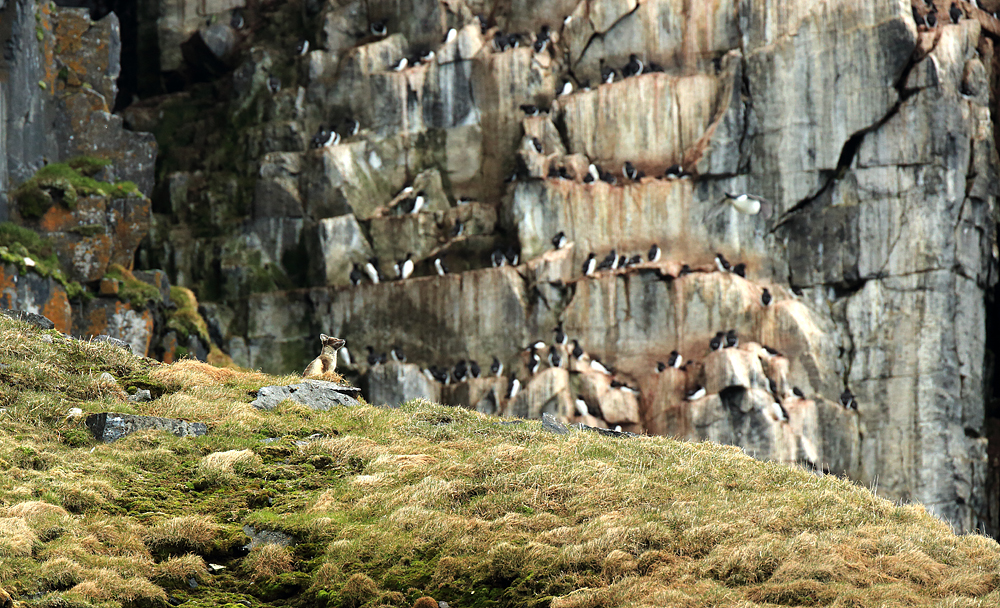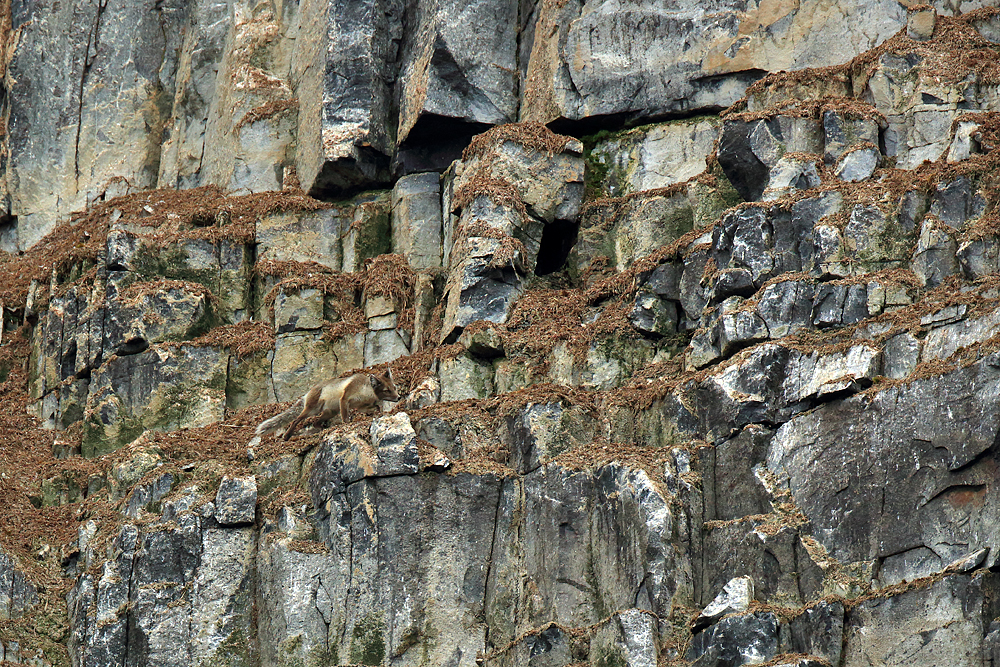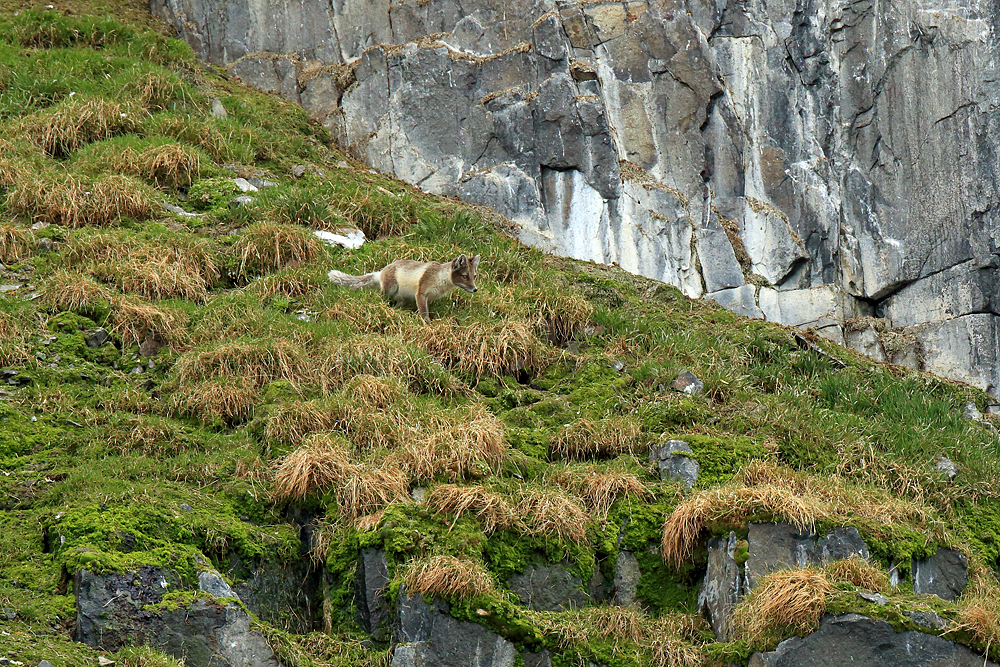|
This year, I was planning to have a break from leading our Iceland - Arctic Fox Photography tour, but at short notice I was called up to lead the tour. And so I found myself with the group in Reykjavik, before our onward flight to the town of Ísafjörður. There was a slight issue - a massive winter storm was hitting Iceland's northwest and we were stuck in Reykjavik. After two nights in Iceland's capital, we decided to make the journey north by road. What an adventure we had as we made our way through blizzards and an epic snow-covered landscape. The following morning we made our way across to Hornstrandir Nature Reserve and we finally got to spend a couple of days with the wonderful Arctic foxes. Here is a selection of my favourite shots from this year (including some particularly obliging ptarmigan). Most foxes in this part of Iceland are blue morph and white individuals are actually a rarity. Therefore, we were absolutely delighted when this white fox made a brief, but close appearance. Throughout our time in the pristine surrounds of Kviar Lodge, we were blessed a whole range of weather conditions which allowed everybody to build up a wonderful collection of images. Although a little unexpected, it was a delight to be back in Hornstrandir Nature Reserve. The foxes are always an absolute delight and we couldn't have asked for more from our brief time there. Join me in 2025 as I return once again with Wildlife Worldwide.
0 Comments
Back in March I was heading overseas once again, leading another photography tour to Iceland for Wildlife Worldwide. We were going to spend 5 days in the remote Horntstrandir Nature Reserve, in Iceland's remote north-west, focussing on the area's population of blue morph Arctic foxes. First, we had a night in Reykjavik, before flying up to the town of Ísafjörður the following morning. The only catch might be if our flight was delayed due to the weather. As we arrived in Ísafjörður, we were met by our host and local guide for the next 5 days. We had a bit of time before our boat across to Kviar Lodge, and so the group were able to grab a cake and a coffee. It wasn't long before we were climbing aboard the vessel that would take us across the fjord and we were then on our way. Upon our arrival at Kviar, we had a strong wind whipping up snow, but we were soon ashore and started to haul our luggage and supplies up to the house. With foxes already showing, it was time to head out with our cameras and embrace the blizzard conditions for some challenging, but incredibly rewarding photography. Over the next few days we enjoyed some truly exceptional photography opportunities with several different foxes. We were able to build up an impressive portfolio of images with some incredibly varied weather. It was the perfect few days to be out in this area of wilderness, just alone with the foxes and eider ducks. Just as the first day at Kviar Lodge, there was a strong wind blowing on the last day, picking up snow and creating a very atmospheric scene. Once again it was perfect for photography and an amazing way to end the trip. With another magical week in Iceland behind us, it was time to head home and reflect on what a beautiful and captivating part of the world this is. I hope these images inspire you to visit this wonderful part of the world - you'll fall in love with the foxes if you do.
It has been another action-packed year for me. With the travel sector back in business, I was busier than ever (making up for lost time) leading tours left, right and centre. With such a busy year, I haven't really had time to focus on my own projects, but I was able to capture a few wonderful moments when out in the field with clients. So with that in mind, I thought I would share my 'Top 5' images from the year of 2022. I should add that these are in chronological order and just a small selection of some of personal favourites. In case you haven't yet realised, I really love taking portraits of wildlife. I would love to know which is your favourite. The wonderful thing about photography is that it is completely subjective. My decision making behind this selection is probably biased, as my memories of each moment are likely to change my perception of the image itself. Anyway, I do hope you enjoy them.
2023 promises to be another busy year and I will do my utmost to keep this blog up to date. In the mean time, I have two more posts to come from my Colombia tour, another focusing on South Luangwa in Zambia and a final one from Australia. Happy reading! Back in March I led the inaugural tours for Wildlife Worldwide to Hornstrandir Nature reserve in the remote north-west of Iceland. Staying at the delightful Kviar Lodge, our sole focus here was the blue morph Arctic fox on our Arctic Fox Photography tour. Coming face-to-face with an Arctic fox has long been on my wishlist, particularly after seeing them in the wilds of Svalbard many years ago. The lodge is situated on an uninhabited peninsular, over 40 km from the nearest settlement and only accessible by boat. Our voyage from Ísafjörður was not the smoothest, but on arrival a fox was running along the high snow bank above to greet us. It doesn’t really get any better for a wildlife photographer. I led back-to-back trips in this spectacular landscape and enjoyed some of the very best photography opportunities I have enjoyed for many years. My clients were spoiled with all sorts of weather conditions and countless moments to capture some breathtaking imagery. Here is just a taster of what we enjoyed … As you can see, the first day was pretty wild with incredibly strong winds and a few snow storms. Although the photography was challenging, it was also particularly rewarding. The weather was very changeable, as you would expect in Iceland during March, but that enabled us to photograph the different foxes in a host of different conditions. The photography was exceptional. I was able to use my phone to capture some wonderful images, that's how obliging they were ... We were also treated to a marvellous display of Aurora borealis and all my first group were able to capture some stunning imagery. But of course the primary focus was the Arctic foxes. Here is a selection of images from the second of the two departures - we really were incredibly lucky with the weather and the cooperative wildlife. I hope the photos above have whetted your appetite - if you would like to join me in Iceland to photograph these charming foxes, there is still space remaining in March 2023. You can register your interest here.
This morning we awoke to big blue skies and headed into the spectacularly beautiful Hornsund. This massive fjord is surrounded by dramatic mountain peaks and destructive glaciers. Being so far South, I have to admit I really wasn't expecting to see as much of the truly specialist Arctic wildlife. Upon arrival in this stunning setting a female Polar Bear was spotted on the shoreline and then moments later another larger bear was spotted on the far shore (perhaps a male). We would be going on a Zodiac cruise to see if we could get any closer to the bears and then on to explore the fjord ... little did we know what was in store for us all. We all met on the deck and waited to board our Zodiacs for our afternoon cruise, I was with the Naturetrek leader Peter Dunn and expedition leader Jan Belgers. We set off as one of the lead boats and headed toward the small headland where we had earlier sighted the female bear. As we approached the shore line we realised that the bear had moved on and as much as we were scanning both the water and the shore we were unable to see anything. Peter then spotted some movement on the water's surface way out in the fjord ... it was the bear, it had managed to slip by us in the ice-cold water. The bear approached an island and we all held our breaths as we prayed the bear would be a 'quality' bear. It was definitely a 'quality' bear ... The real benefit of the island was that the bear felt completely at ease and we could travel all the way round for a constantly changing backdrop. As a photographer you always want to try and capture that image that stands out and lingers in the mind, this really was the perfect photographic opportunity. Even then this was one of those moments where you just have to put the camera down and really take in the moment! We slowly moved around the island the backdrop was more than you could ever have dreamt of. We slowly moved closer and closer, all the time keeping an eye on the bear to make sure it was completely at ease. We all go the odd glance and a quick sniff but it certainly wasn't affecting its scavenging behaviour. The bear was obviously search for whatever food it could find, it is known that a variety of birds breed on this island in the summer months. After a wonderful hour with this remarkable Polar Bear we thought it would be best to leave it in peace and leave it to carry on with its search for food. With a few months remaining until the sea ice returns this bear will really have to try and conserve its energy and find whatever scraps that are available. We move further up the fjord to see whether we could approach the second bear, he was a huge male but he was not at ll interested in us and remained in his slumber. We carried on towards the head of a glacier to explore the amazing landscapes and the ice-filled water. I really hope you have enjoyed looking through all of these images and with only one more post left, I think that this is perhaps the highlight of the cruise. This day was quite possibly the most memorable of my life outside of my time in Africa, with jaw-dropping landscapes, danger and unbeatable wildlife encounters I am not sure what can beat it.
Coming up are some charismatic reindeer and a few more landscapes so please keep on reading. Our planned landing site for this morning was Kapp Waldburg, a site for nesting Kittiwakes in a steep sided canyon. As we arrived at our landing point we heard over the loud speaker that there was a Polar Bear and we would have to head elsewhere to stretch our legs. From there we headed on towards the tundra habitat at Sundneset, once again as we approached the landing site the Polar Bear call went out again. This bear was very relaxed and the expedition team decided it would be safe to land slightly further down the coast and have the ship keep an eye on the bear's where abouts. As we landed we were greeted by a truly wonderful site, a stunning pair of Grey (or Red) Phalaropes were feeding only yards away from us. The male was particularly obliging, carrying on with its feeding as if we didn't even exist, the female on the other hand seemed to be rather skittish and wasn't a particularly good poser. Unusually for the bird world the female Grey Phalarope is actually the more beautiful. The males take care of the eggs and ensure they hatch before raising the chicks, the female visits a multitude of males and lays her eggs with a few of them ensuring that they have the best chance of survival. As we left the two phalarope to their own devices we headed inland across the tundra and had an unexpected but truly wonderful encounter. A very shaggy Arctic Fox was heading towards us and we were blessed with extraordinarily close views. The fox had not yet lost all of its winter coat and spent a bit of time rolling around doing its best to free itself from its Arctic jumper. There were also a few Svalbard Reindeer within the vicinity but they were all a little nervous around us. After spending a couple of hours on shore and aware that there was still a Polar Bear within the vicinity it was time to head back down to the Zodiacs and transfer back to the Ortelius. As we reached the landing site we realised that the male Grey Phalarope was still feeding and happy to pose for the photographers in the group. After another incredible lunch we set sail for Dolerittneset, the ship anchored and we were once again out on the Zodiacs heading for shore. I joined the hiking group and we climbed up into the misty hills that towered above the water. We really didn't see much except for a few reindeer and a couple of ptarmigan and even Stein (our Norwegian guide) seemed to find the climb hard work. I am sure on another day the views could have been superb but on this day the visibility was less then 20 metres.
We eventually headed back down towards the ship and had a look at the multitude of Walrus bones that littered the shoreline. This was once a great Walrus haulout but unfortunately they were nearly hunted to extinction in this area. There were a couple of individuals on the shore but no longer were there the numbers that once thrived here. Once we were back aboard the ship, we headed for the southern most tip of Spitsbergen and up towards the stunning fjord of Hornsund. This took us all night and most of the next morning but what was in store in Hornsund was something none of us ever expected, it was a day that will stay with me until the day I die ... keep reading to find out what Hornsund had in store. Having had two Polar Bear sightings in as many days the morale was high among the group but sadly our planned excursion to find the Walrus haulout was a no go. It seemed that nobody was at home and so we moved on to the fhord at Faksevagen. Here we went off on our first proper walk to explore the Arctic Tundra. We set off with our Norwegian guide Stein and headed up the hillside into the slight mist. Stein was completely relaxed and didn't seem at all worried by the possibility of any bears. We spotted a few Reindeer here and there but they all seemed to keep their distance from us, suddenly we had company ... a Purple Sandpiper. The bird blended in superbly well with the tundra and you can see why they breed in this terrain. Then at long last the Reindeer came close enough for me to get a few shots, including the lovely male below which had a great set of antlers. As we walked along the edge of a shallow ridge line we suddenly saw a white animal appear within only a few yards of us. Your reaction says Polar Bear but luckily it was only another Reindeer, and luckily for me he posed nicely for a few photographs too. At the top of the ridge we had a sighting of the ship surrounded by an ice floe that had been at least half a kilometre away when we landed. It just goes to show how quickly the environment can change in this amazing landscape. We headed back to the ship for yet another filling lunch before we headed to the amazing breeding colony of Brunnich's Guillemots at Alkefjellet. We were told to dress warmly as we were going to be on the Zodiacs for at least a couple of hours and possibly more depending on the quality of the sightings. We went out onto the water in our Zodiacs and I had our Austrian guide Barbara (an expert on Glaciers). We made our way slowly towards the cliffs and at first there were just a few hundred birds on the tiny rocky outcrops, where each bird was incubating a solitary egg. However, as we made our way further along the cliffs, away from the ship the sky seemed to be filled with birds. The cliffs were towering above us, stained a mix of white and pink from the guillemots' droppings, and the birds were there in their thousands. The noise was quite amazing and it was an incredible spectacle which I feel truly honoured to have seen. We were desperate to see our first Arctic Fox at Alkefjellet and when we came to a grass covered scree slopes it was the best chance we would have. We scanned and we scanned but we just couldn't see any movement ... then Barbara spotted one, our first Arctic Fox. She was so excited and we were too, it was a long way off but it was an amazing sighting. We eventually decided to leave the fox alone and head back to the ship for the evening and yet another meal. Tonight we were heading to a fjord that has only be visited by a handful of vessels, even our expedition leader had never been there before. We were now really on a true Arctic expedition and heading into the unknown.
|
AuthorBret Charman Archives
July 2024
Categories
All
|









